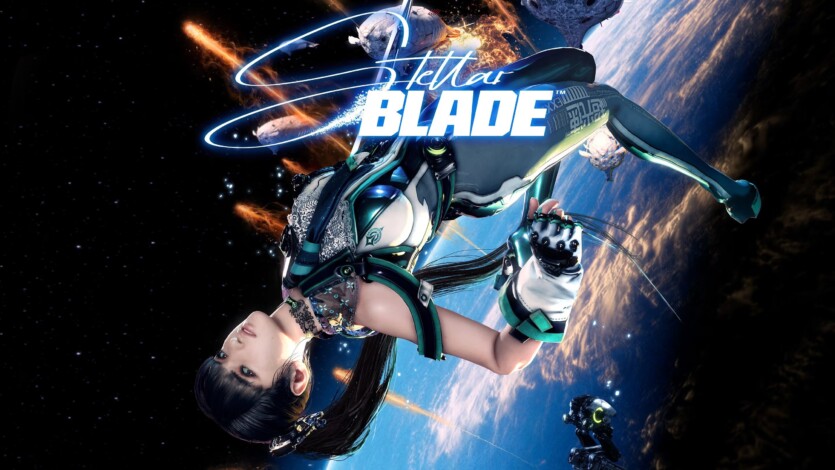
When the Earth has long been scrapped and AAA games are still trying to understand what the player wants, Stellar Blade just takes and gives — style, dynamics and Eve. It’s an eclectic mix of NieR: Automata, Sekiro, and an art book with the hottest Pinterest pins, mixed with pathos, parries, and fetish. But the game isn’t just about posing: underneath the gloss is a reaction-oriented combat system, a world that gradually reveals itself through the wreckage of the post-apocalypse, and a scenario that unexpectedly raises difficult questions. We dove into the PC version of the game to explore in detail not only the game itself, but also its port to computers.
Content
Stellar Blade atmosphere and style
The first step in Stellar Blade is a culture shock on the scale of an entire planet. The Earth has been transformed into a depressing advertising zone: dust, wreckage of civilization, remnants of humanity that for some reason look like they came off the Louis Vuitton runway. Eve comes down from capsule seven (not On the 33rd!) of the airborne squad, as if posing for a trailer for the new Cyberpunk 2077, and the world around them is something between «Ghost in the Shell» and Dark Souls: K-pop Edition.

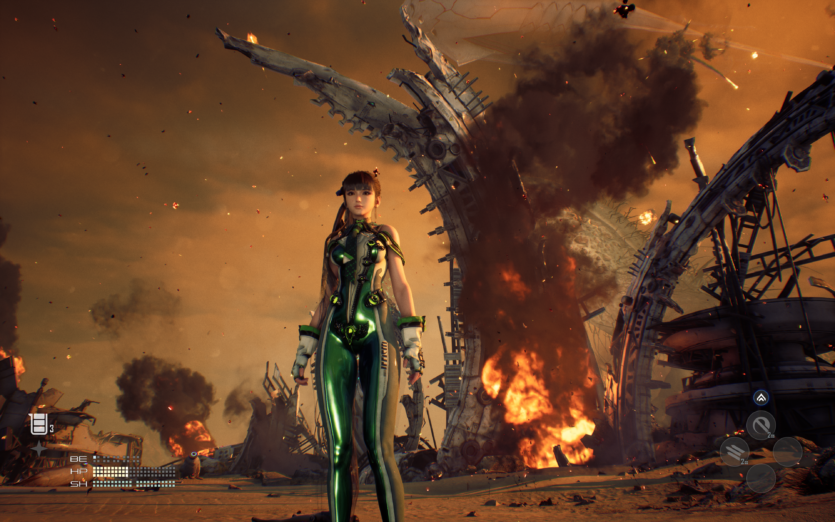
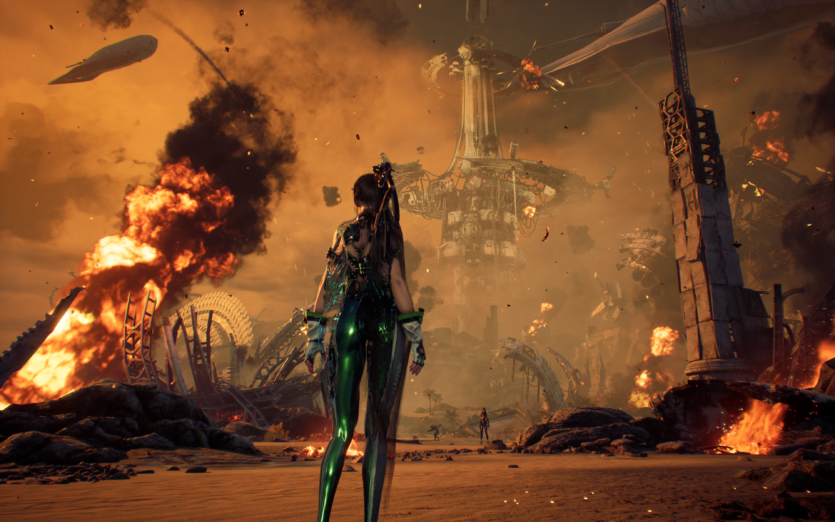
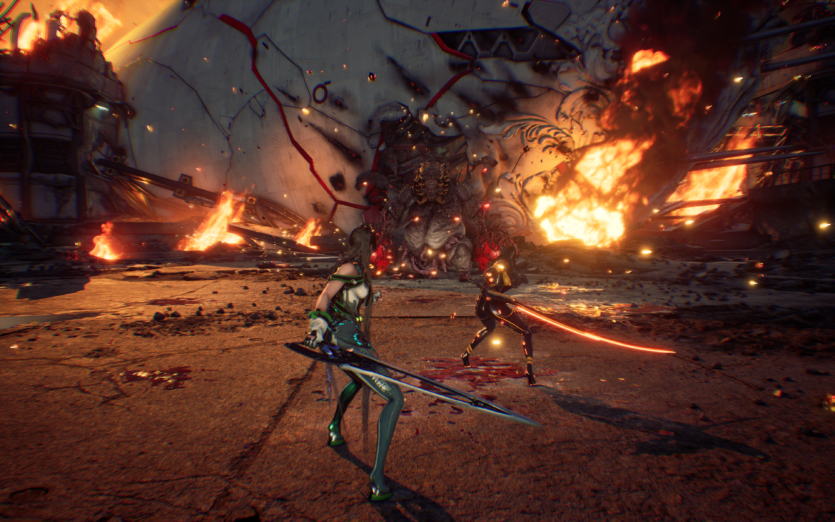
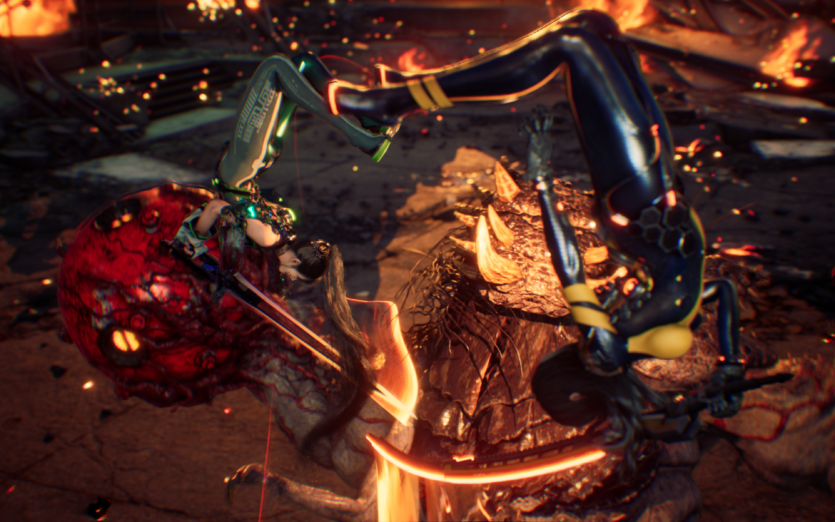
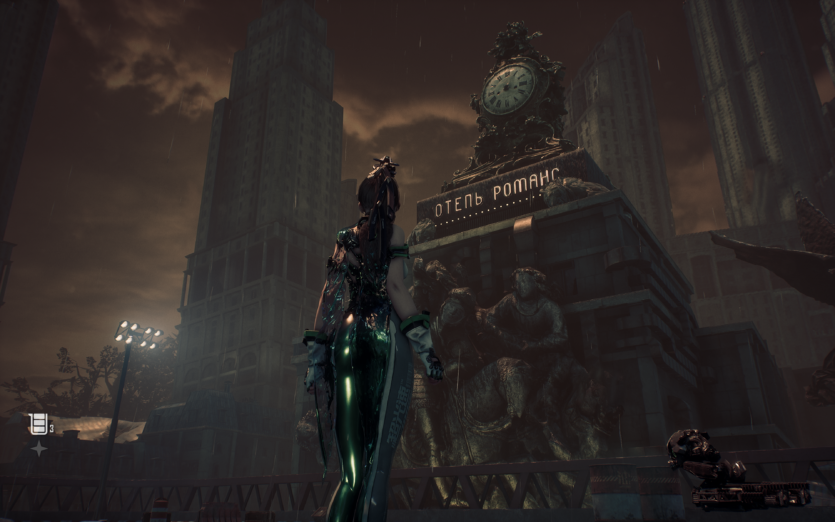
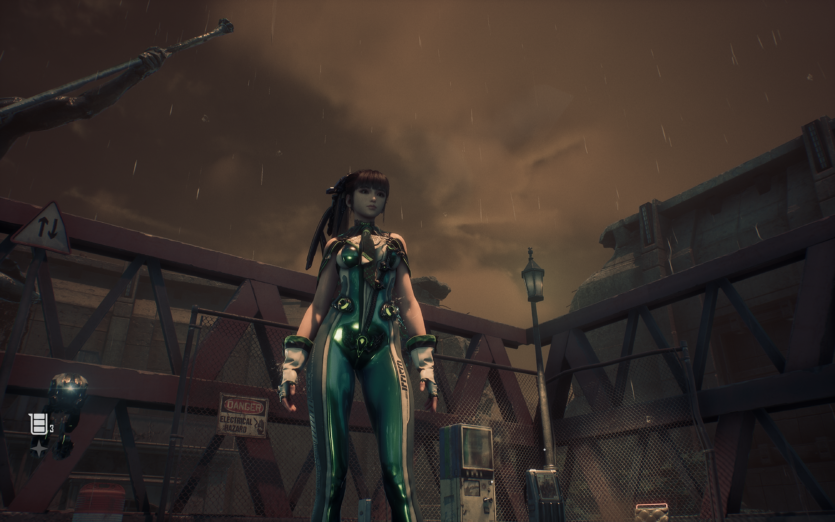
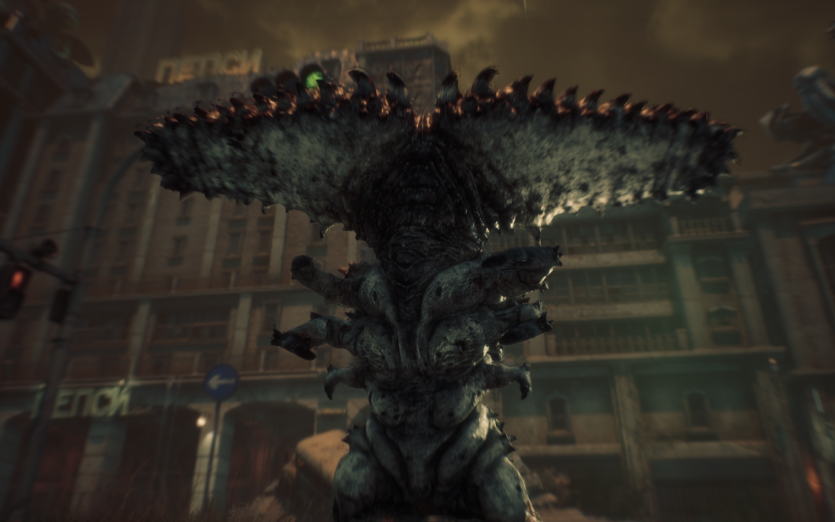
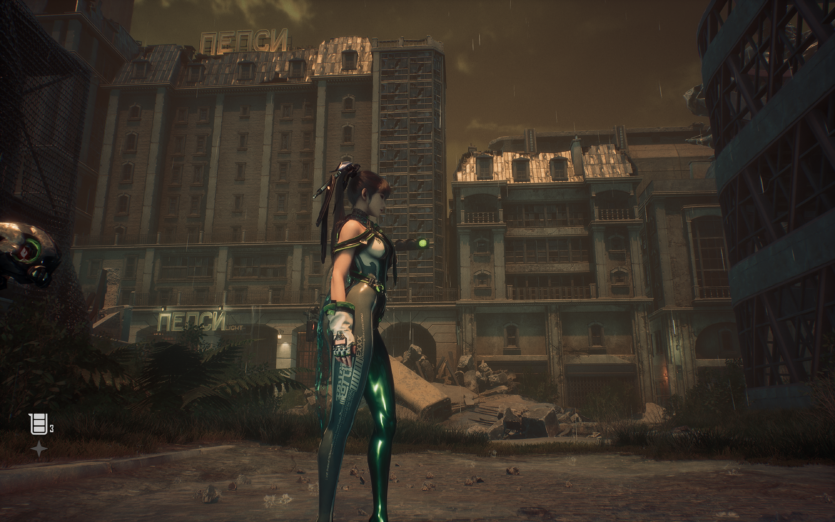
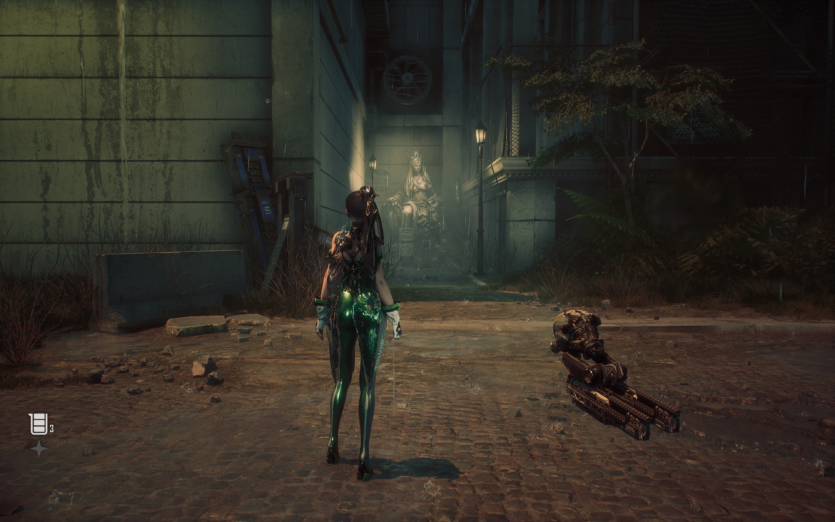

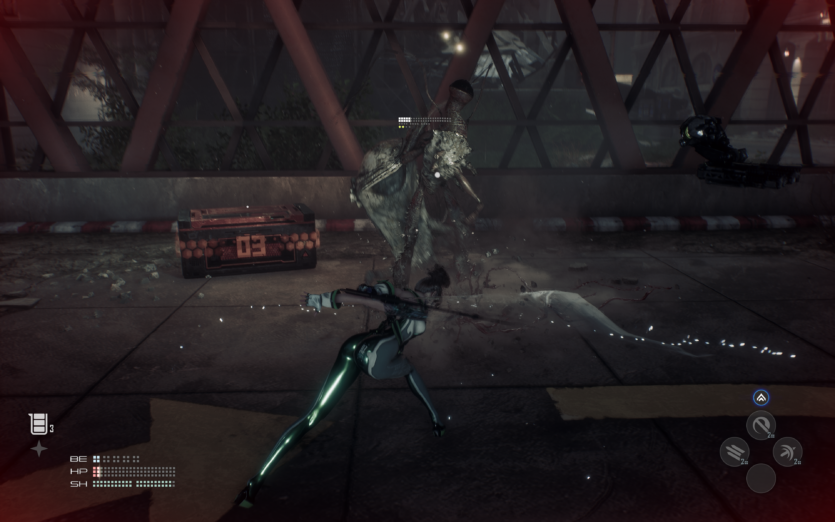
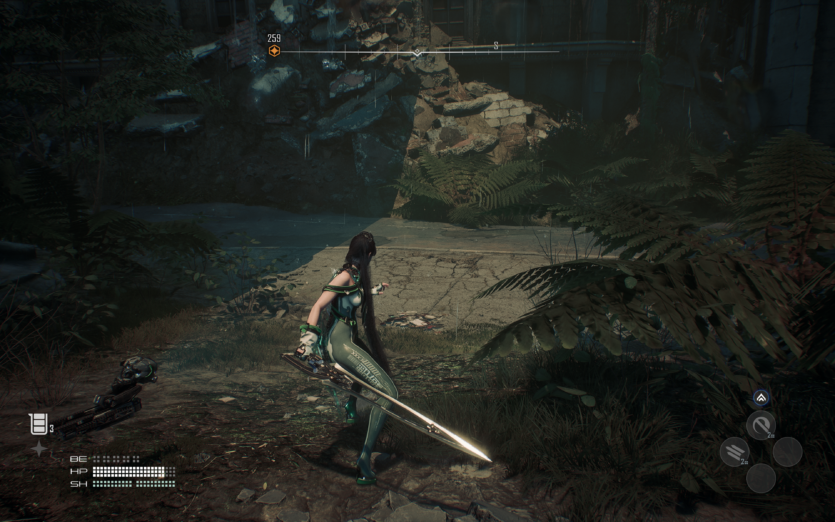

The landscapes in the game — title contender «the most aesthetic apocalypse of 2025». Each zone feels like a carefully customized Instagram filter: ruins with the right lighting, windy plains with a particle effect, and tunnels where HDR light is cranked to the max. Unreal Engine 4 doesn’t just work here – it’s on fire.
Visual style — conscious anime aesthetics (yes, yes). Character costumes often have no logic in terms of physics or hygiene, but every frame is a desktop wallpaper. Shift Up chose the path of stylish inflection and… honestly, it works. Especially if you grew up on Bayonetta, NieR: Automata, and Instagram cosplayers’ pages.
The strong visuals and tonal mood keep the game afloat. Shift Up didn’t just make a pretty picture — they created a world you want to believe in. This is the case when you stop at a landscape not because of the boss ahead, but simply because it’s beautiful.
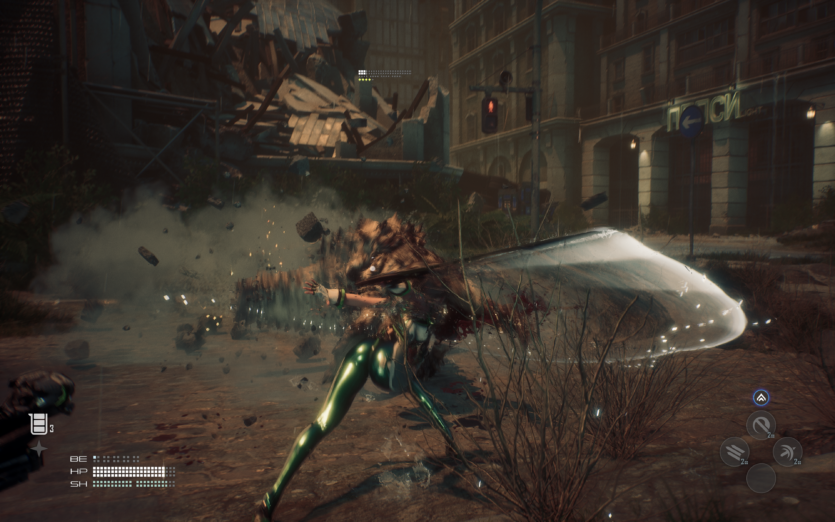

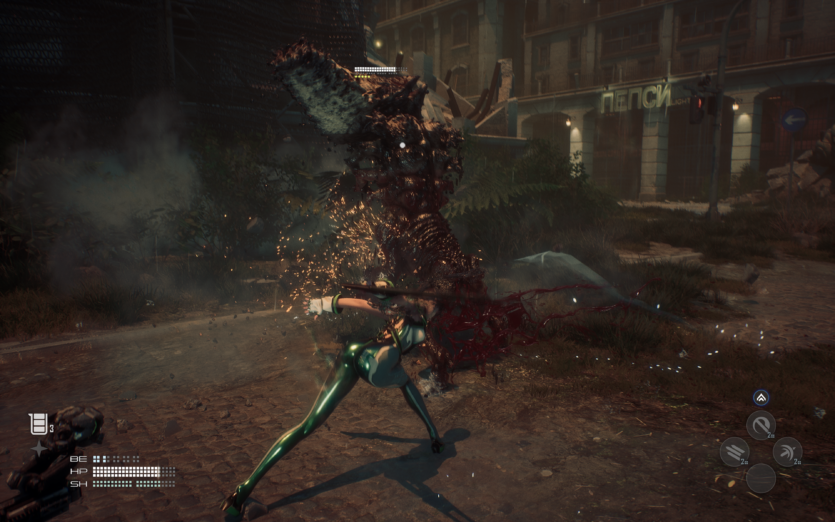
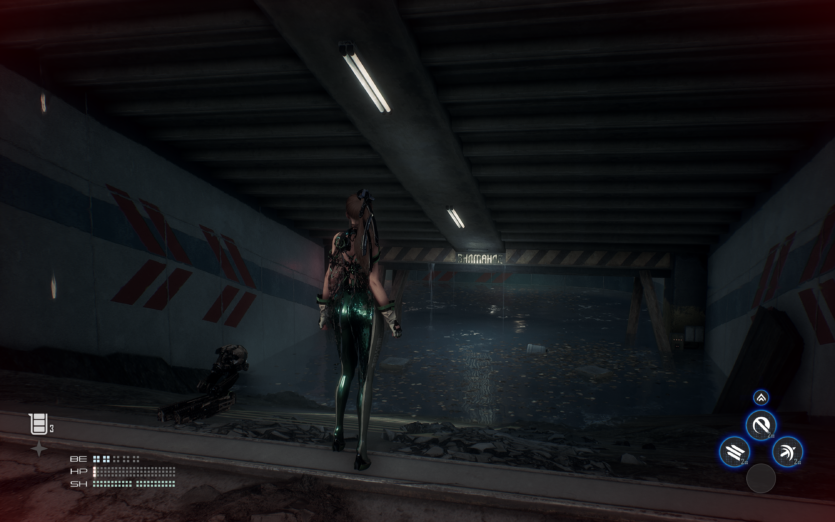

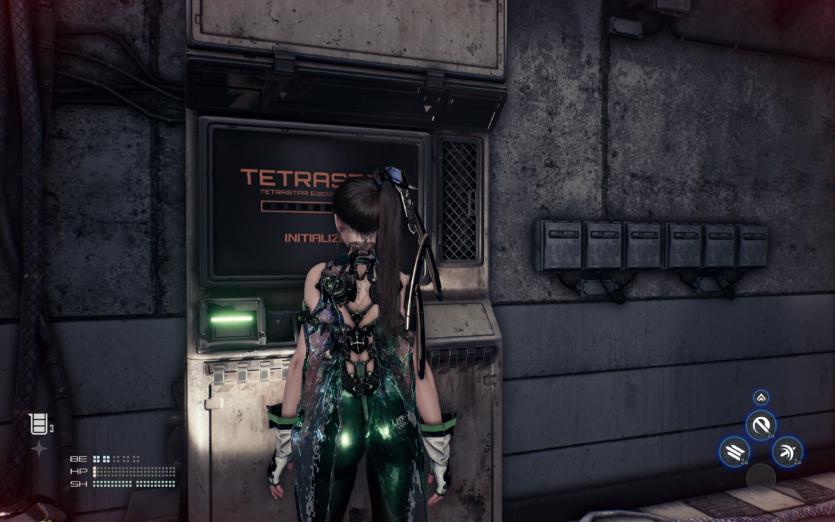
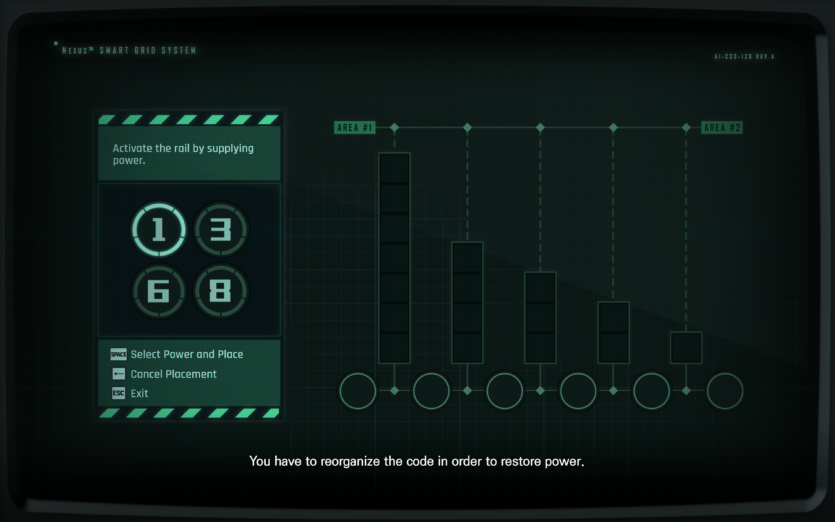
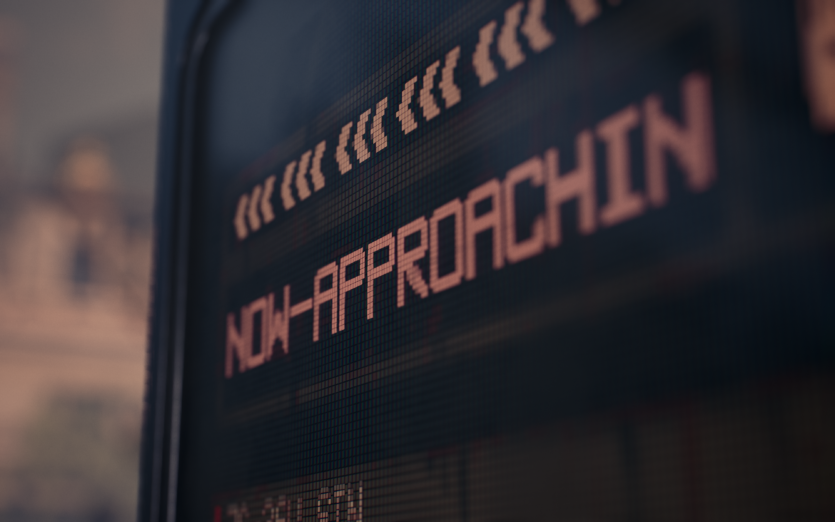
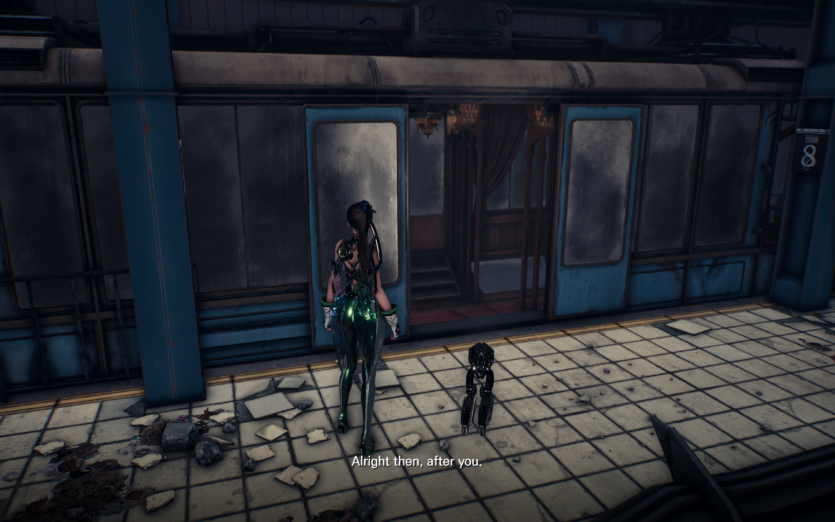

The attention to detail is particularly pleasing. Every post-apocalyptic sign, every fragment of civilization looks as if it was created by hand. The design of architecture, props and even garbage is almost art house. If Death Stranding were not a depressing Uklon, but something brighter, it could look like this.
Despite the visual fetishism, Stellar Blade maintains integrity. Her style is not just «beautiful» — it works in the context of the universe. Excessive aesthetics against the backdrop of ruin creates a postmodern dissonance that holds the attention. What is it — the last breath of civilization, or its hypertrophied parody?
Storyline of Stellar Blade
Eve arrives on Earth, which humanity has somehow managed to lose. And not to just anyone, but to the Nightsiders — biomechanical monsters. The planet is in ruins, the heavens are groaning, and humanity — well, it moved to orbital stations and evacuated all logic there. Eve — is not just a combat unit, she is an «Angel» sent to Earth to «save everything». And here it begins.
The Stellar Blade scenario doesn’t immediately reveal its cards. At first, like an introvert at a party, it keeps to itself and nods towards the first bosses. Then it gently hints that something is wrong with this war. Who is the real enemy? Why is all this happening? Why do all the living people act as if they know something the protagonist doesn’t? And why does the android start asking questions — is this the end or just the beginning?

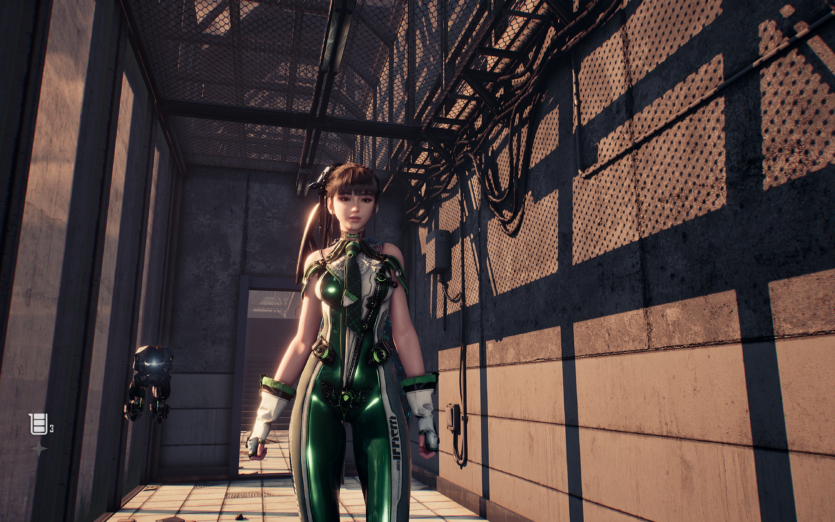

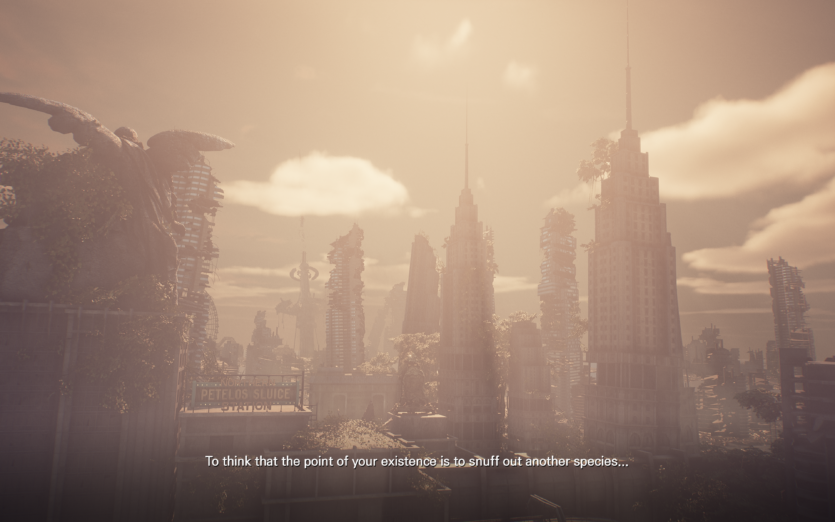
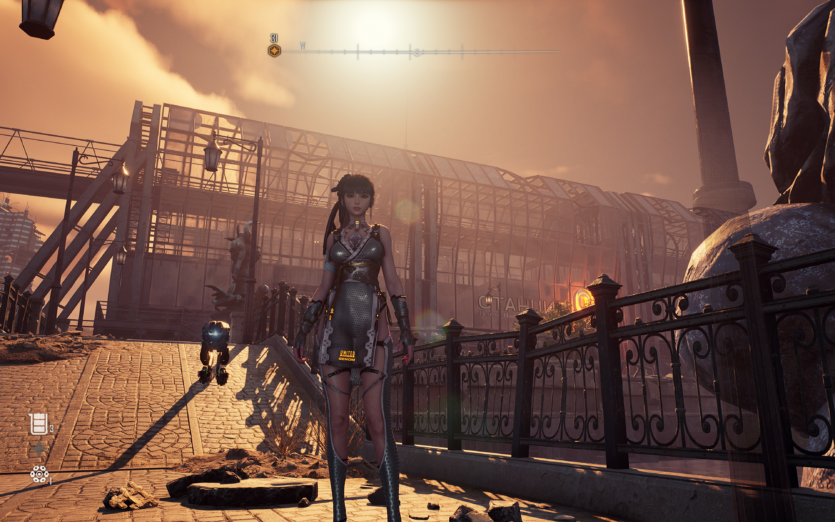
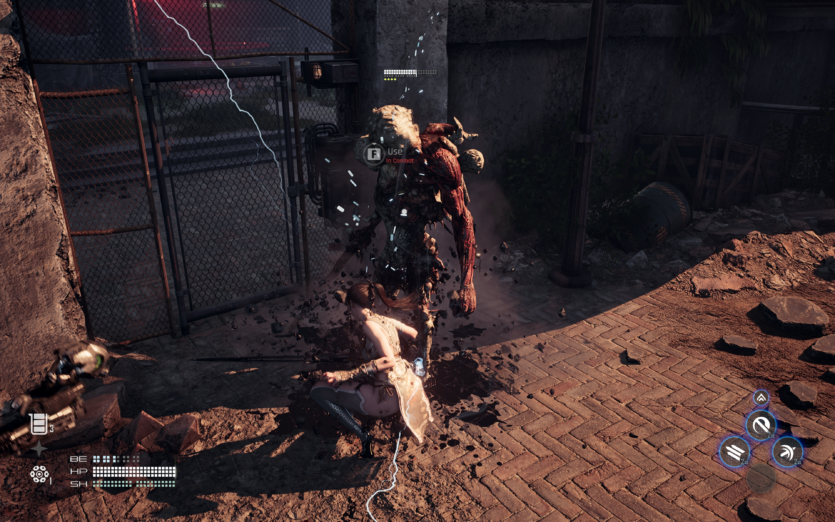
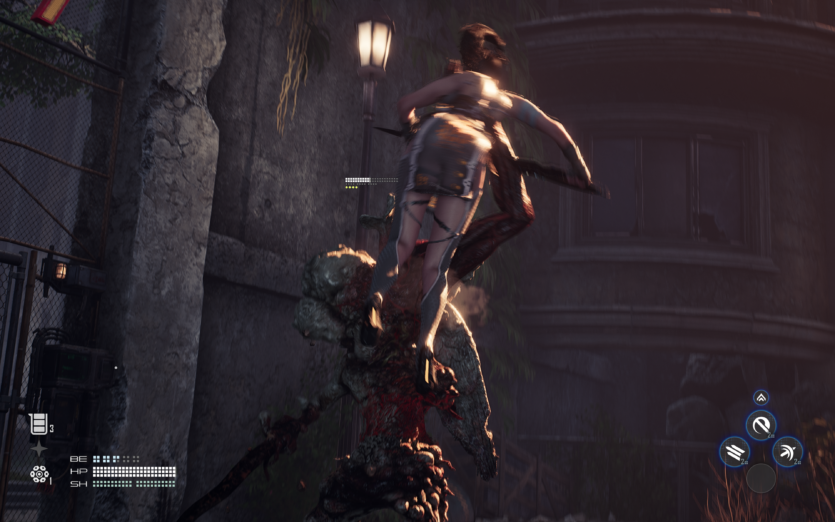
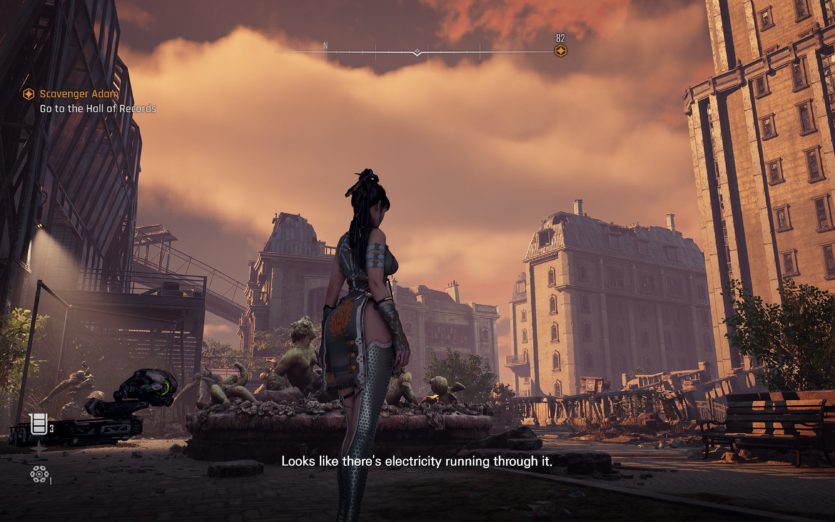

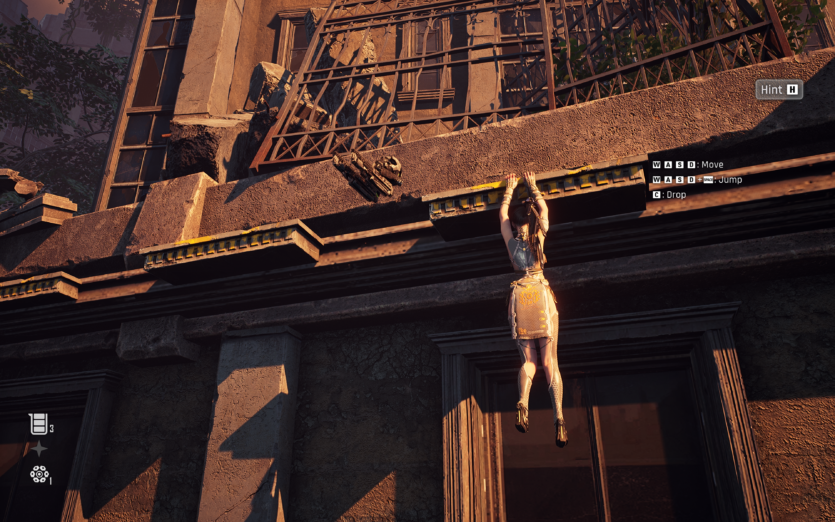
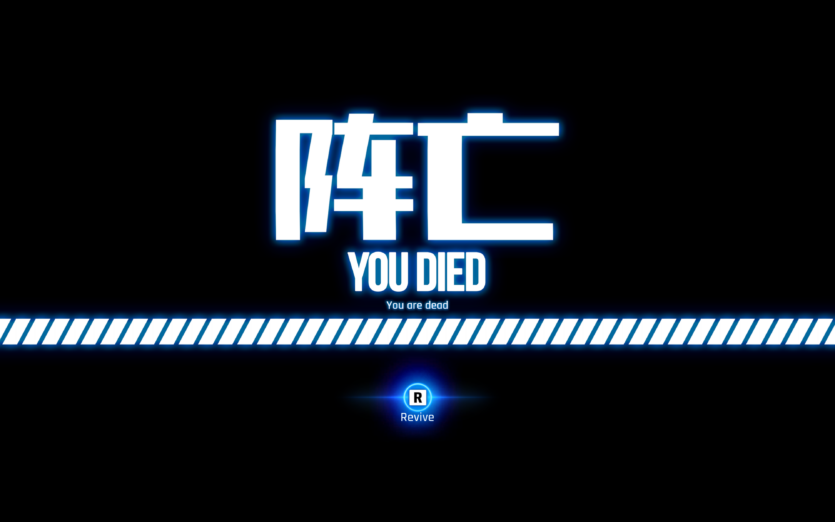
It’s a sci-fi classic: a world where truths are hidden behind the walls of a pseudo-religion, and an organization that you shouldn’t trust, but you still follow its instructions. Yes, it was in NieR: Automata. Yes, it was in Horizon. Yes, it was even in Destiny 2, but at least here you don’t have to grind for dialog. The story of Stellar Blade is a mix of everything that has ever inspired Korean developers with a philosophical obsession.
Gradually, the story is revealed — and, surprisingly, not through short-length cutscenes (although there are some), but through dialogues, fragments of the past, and quest stories. And this is where the fun begins: the more you dive in, the less you trust those who call themselves allies.
The themes of faith, manipulation, and devaluation of individuality are particularly expressive. The whole plot is based on the conflict between control and freedom, but not head-on — but through characters who gradually lose faith in themselves or their purpose. There is no clear answer here «who is right» — and this is against the backdrop of an action anime drama. The game asks questions that catch you, even if the answers are in the style of «think for yourself».



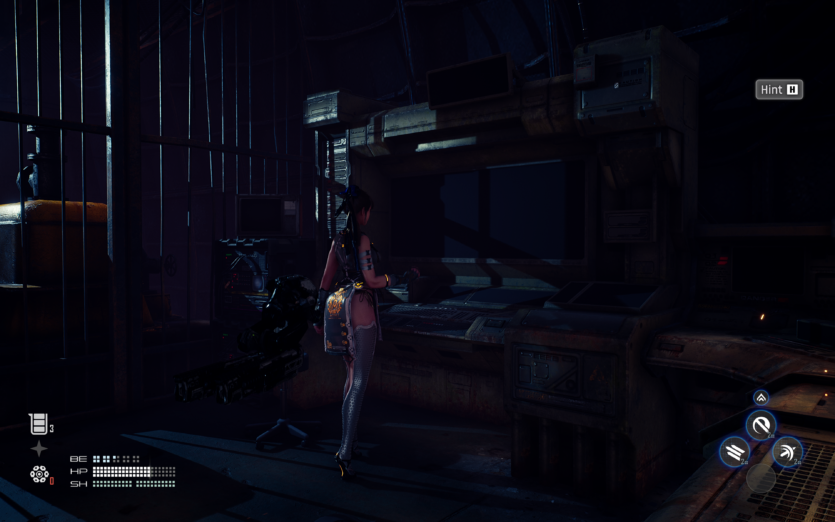
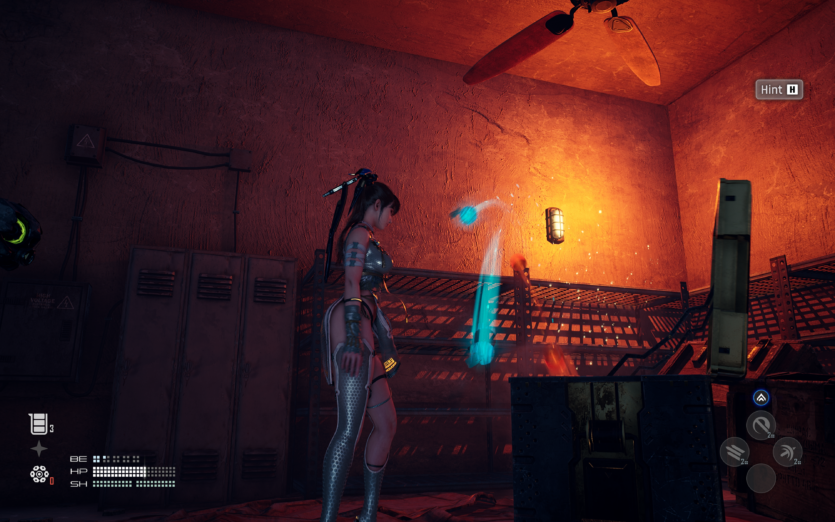

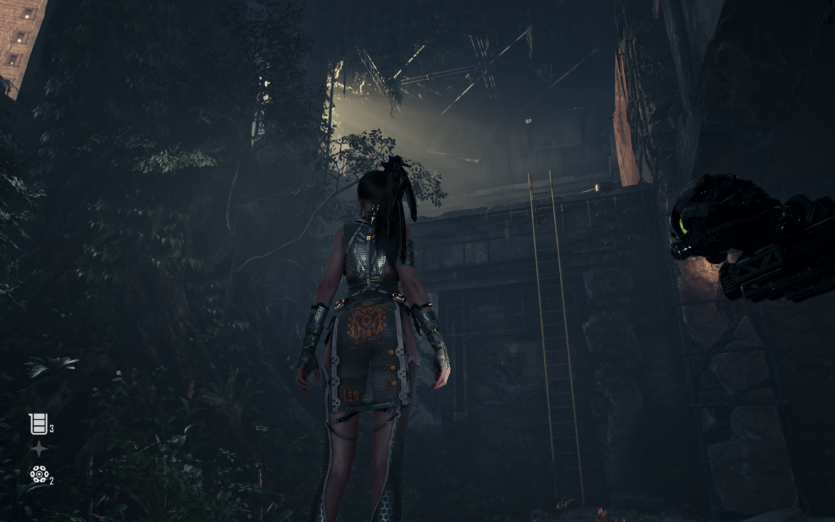
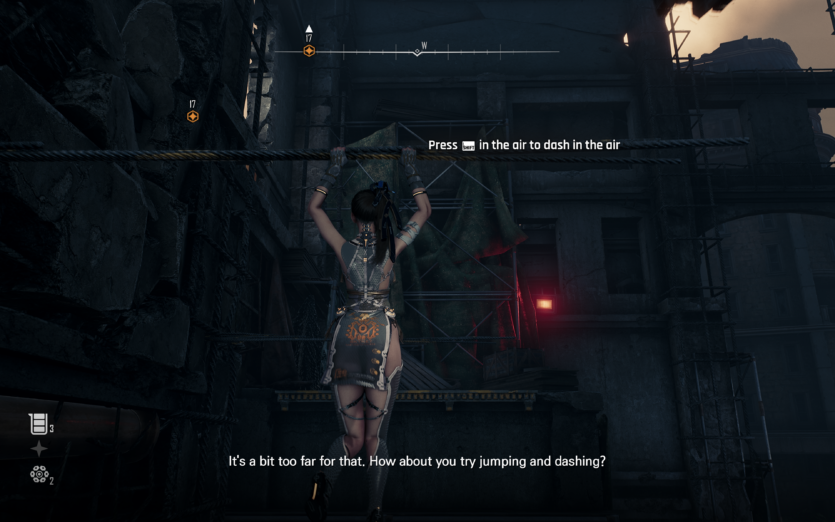
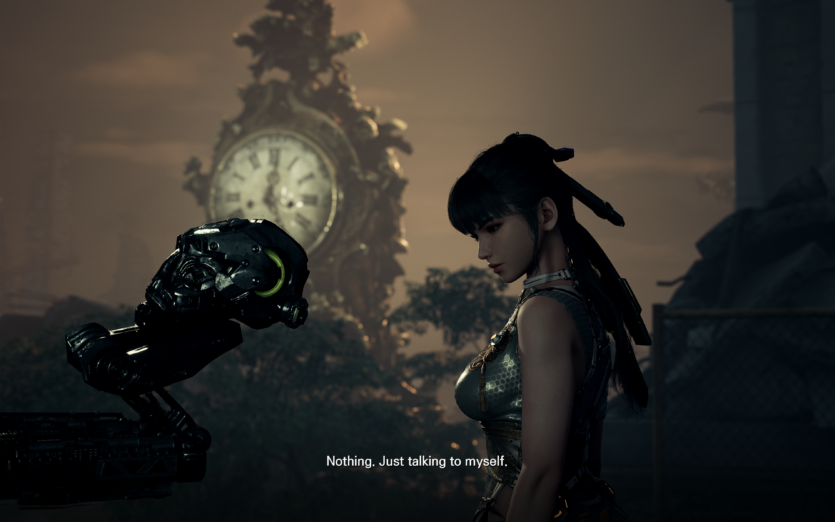

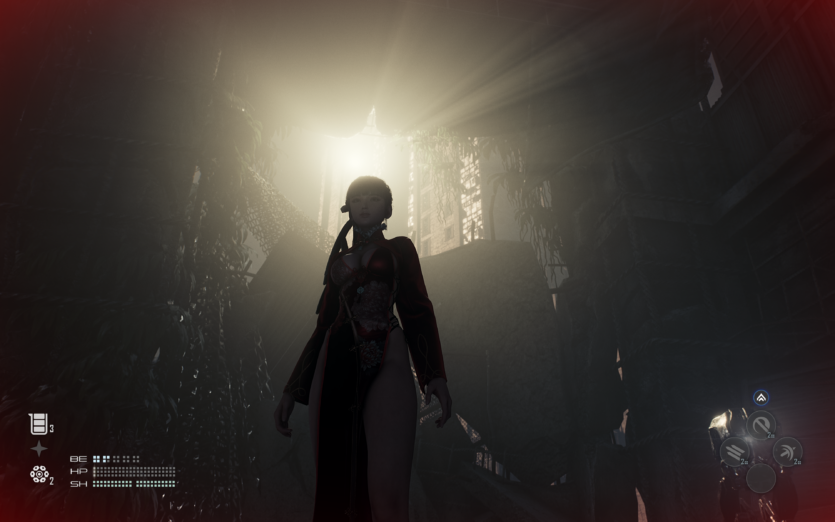
If you still have a preconception that side quests are just filler between main events, Stellar Blade will take that preconception, wrap it in a shiny latex bodysuit, and throw it out of the nearest ramp elevator. Yes, there’s the classic «take and bring», or even «take and then bring» again, but it often turns into an emotionally charged scene.
The most apt example is the storyline with the androids Enya and Xu — a seemingly simple story about a bar singer who has lost her voice suddenly turns into a short dystopia with notes of «Black Mirror». You don’t just give the girl her voice back — you discover the mechanisms of lies, betrayal, love, which is doomed to disappear along with the memory drive. There is drama, depth, and even the possibility of choosing whose truth you consider real.
It’s especially valuable that some quests just… end. Without «yay, you’re a hero!» or «here’s +1 to karma». Sometimes you just can’t help. And this honesty on the part of the game — when it recognizes that you can’t always save everything — gives weight to every decision you make.
There’s a certain allusion to biblical motifs, like Zack Snyder at his peak, a bit of posthumanist pain, and of course, flashbacks. You can’t do without them nowadays.
Stellar Blade gameplay
Stellar Blade tries to present itself as a stylish action game in the spirit of Nier: Automata, but beneath the gloss of cinematic cut-scenes and lightning-fast animations lies a mechanic worthy of a separate engineering revision. The combat system is built around timing, parrying, and choosing the right moment to counterattack, not just a slasher mishmash. It is important not only to hit, but also to feel the pace — there is a kind of «rhythm of the battle».

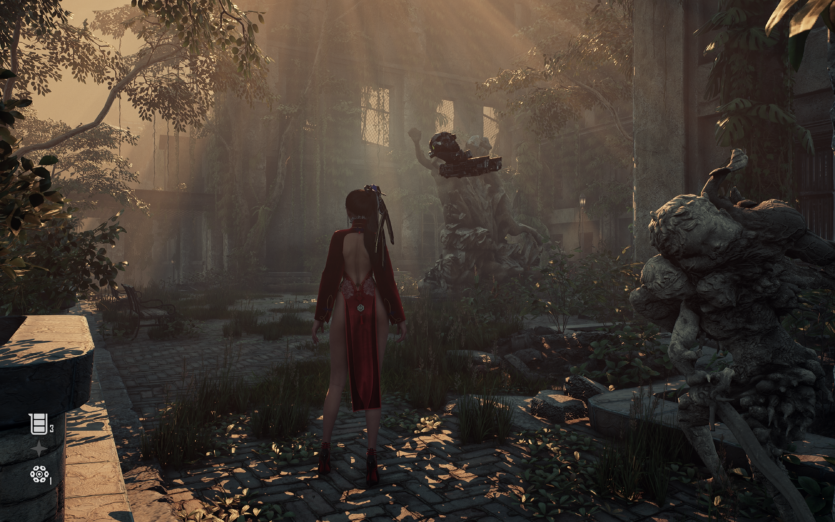
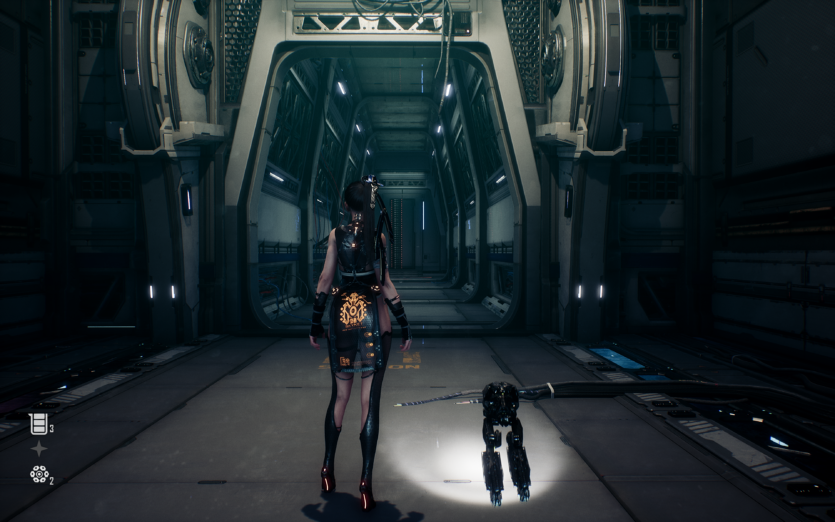


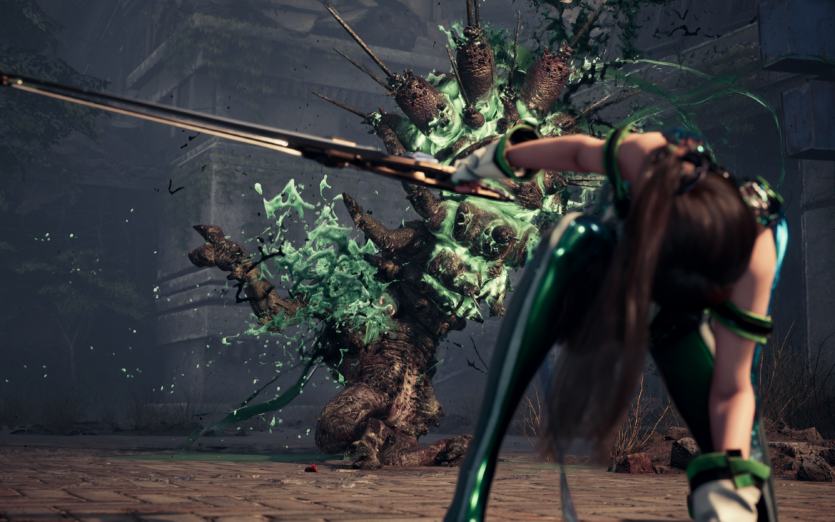
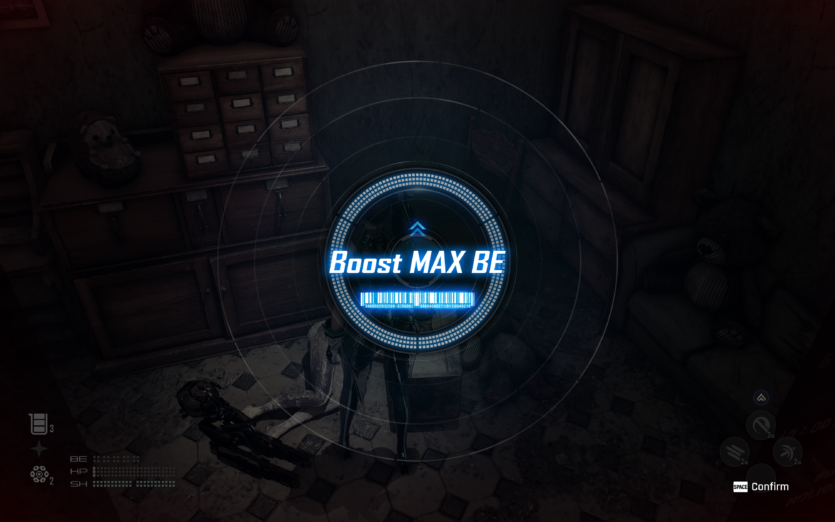
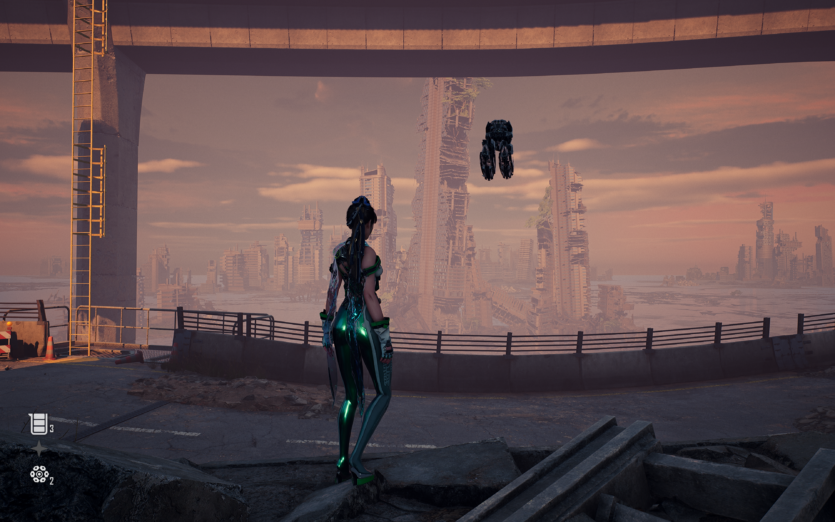
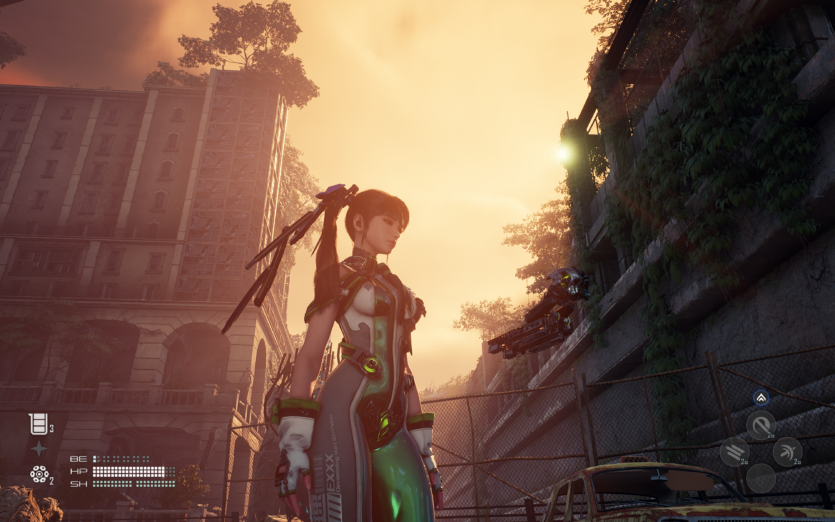
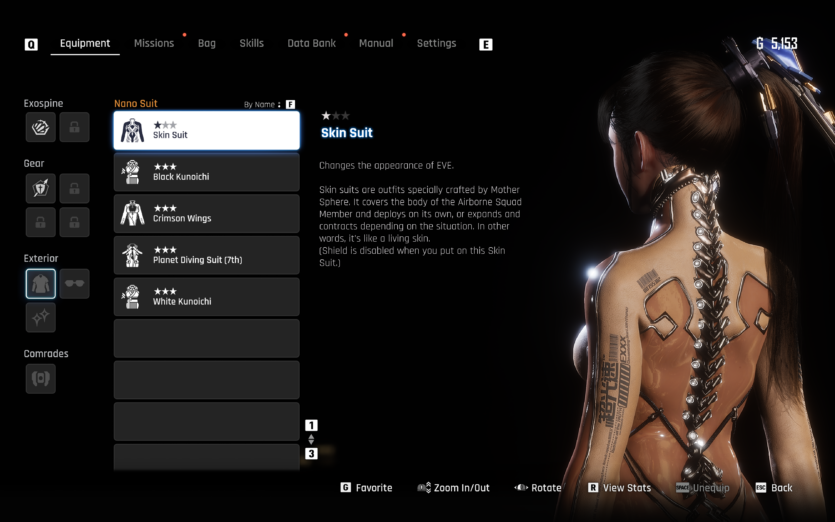

One of the key elements is Beta Energy — a system that accumulates energy through successful parries and combos, allowing you to activate powerful attacks and skills. This design encourages an aggressive but deliberate style of play.
Parrying is a real survival tool here — a timely block not only reduces damage, but also allows you to break the enemy’s defense and opens up the moment for finishing. In addition, some bosses literally require absolute timing — miss a hit, and you’re immediately on the checkpoint.
The depth of the combat system is gradually revealed through upgrades, learning new combos, and the so-called Exospine — interchangeable modules for the heroine that provide additional buffs, such as faster energy recharge or increased knockdown resistance. Each module significantly changes the balance, which means that the strategy depends not only on the speed of your fingers but also on your settings.
Difficulty level — is not just «cyberpunk girl beating everyone up». There are clear peaks in the form of bosses that do not forgive mistakes, especially if you have not mastered the basics of parrying or optimized Exospine. However, for less experienced players, «Story Mode» is available, which reduces the requirements for timing and makes the game more forgiving. And even in this mode, the last bosses require concentration.
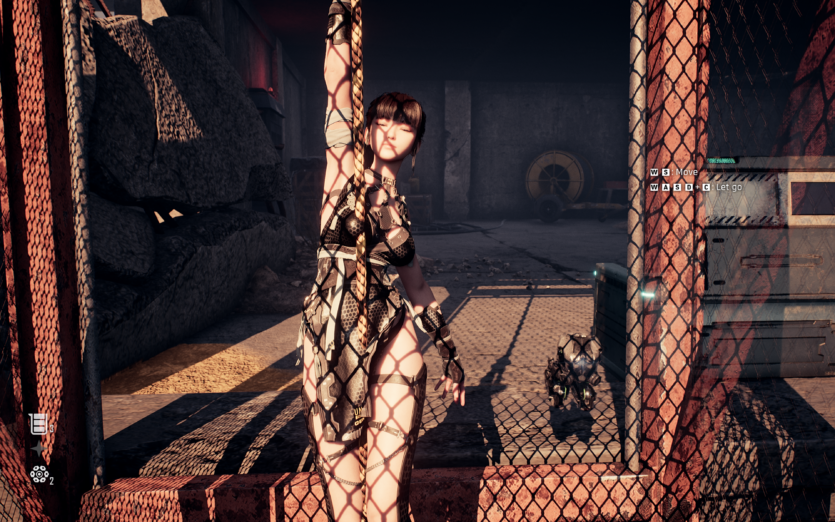

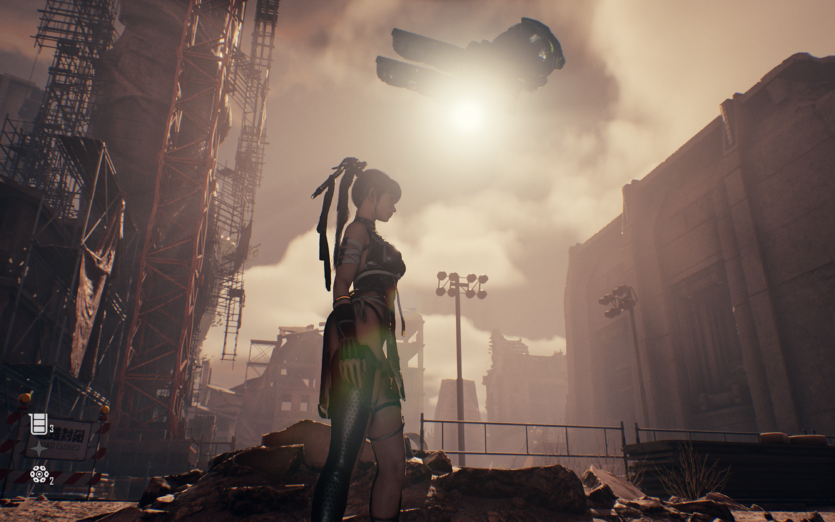


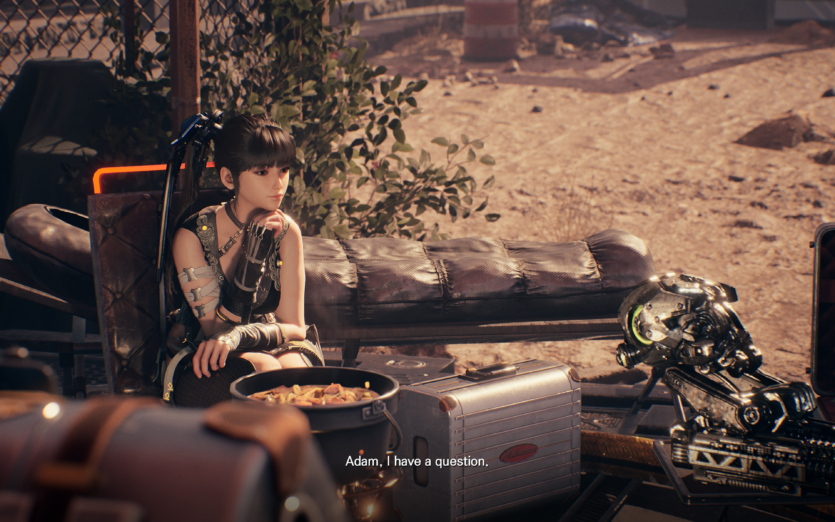

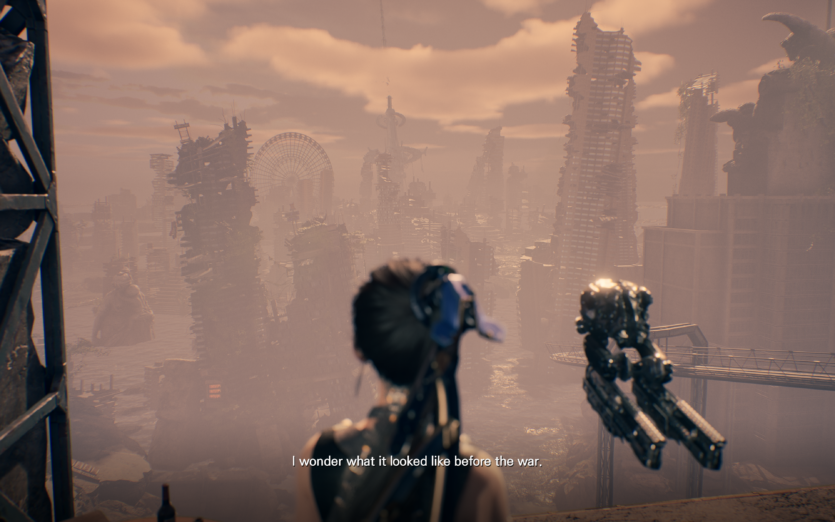
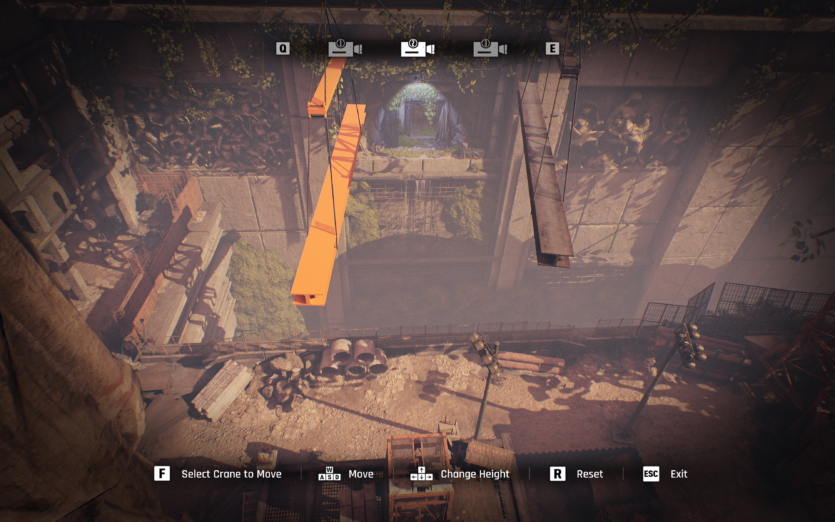
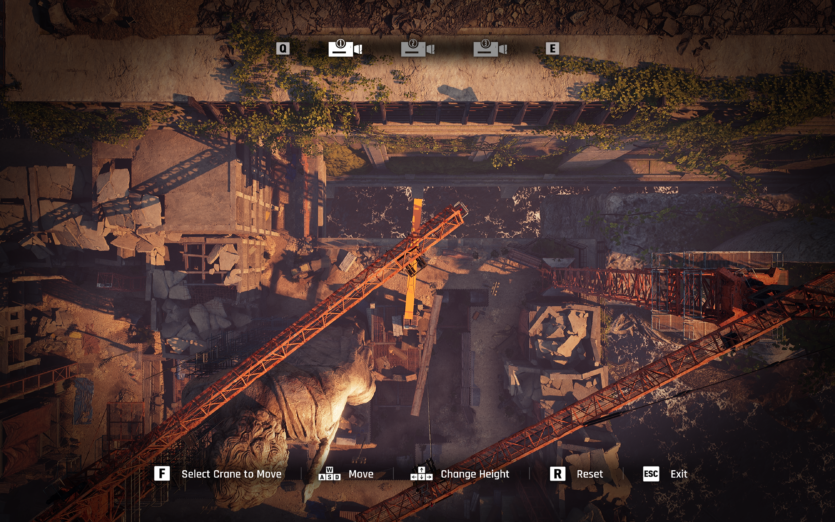
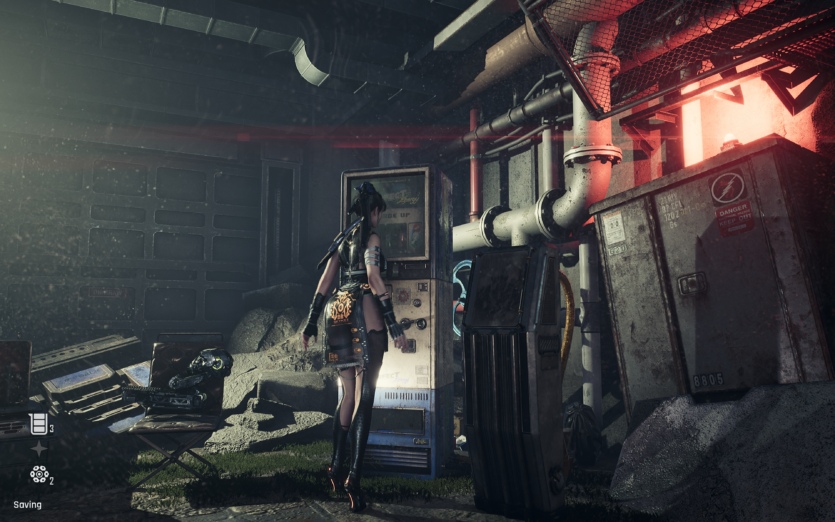
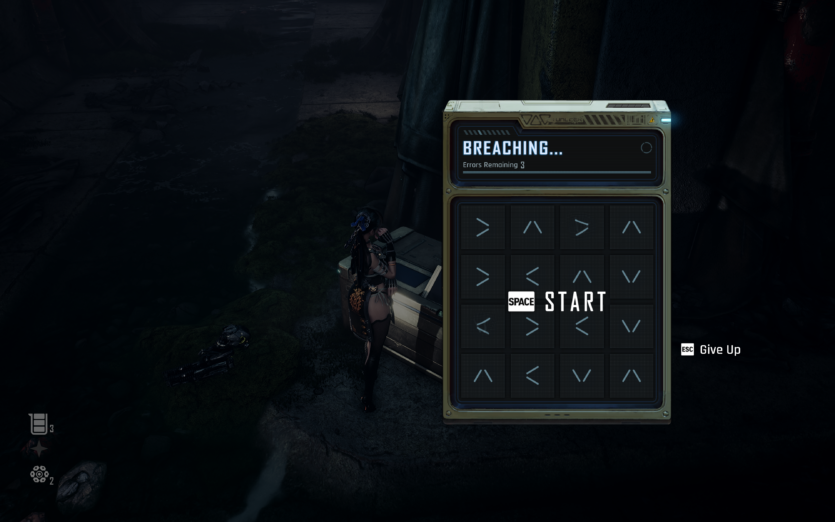
Parkour and movement, however, could be better. Eva jumps with the grace of a hypersensitive ballerina on slippery ice, and catching the timing is a separate mini-game. But there’s a silver lining: when you succeed, you feel like you’ve just completed a Prince of Persia introductory course for masters. Especially in the depths of the dungeons, where one wrong move and you’re at the bottom, full of philosophical disappointment.
The pumping system is branched, like the tree of knowledge in a classic RPG. There’s a combat skills branch, a health branch, a special skills branch, and a few more bonuses that open up closer to the middle of the game. It’s not just «+2 to health» — here you can change the entire fighting style. A player who focuses on counterattacks will play completely differently than someone who relies on combos or Beta Skills energy.
Most of the time, the player balances between exploration, combat, and dialogues. And what’s important — Stellar Blade doesn’t try to squeeze everything into you at once. New opportunities open up gradually, the pace of content delivery is steady, and you can feel the progress: the first hour of the game is not the same as the fifteenth. There is a real sense of evolution here.
Stellar Blade combat system
In Stellar Blade, the combat system is the true core of the game. This is not a case where you rush through enemies in the style of «spam attacks = victory». You need to think, feel, and learn. There is a rhythm to every battle, and if you catch this bit — congratulations, you’re already halfway there.
The trick of Stellar Blade is timing. Parrying here is not just a mechanic, but a way of life (hi, Clair Obscur: Expedition 33). Successful parries charge the Beta Energy scale, which unlocks particularly powerful moves — those that make enemies crumble into pixelated ash.
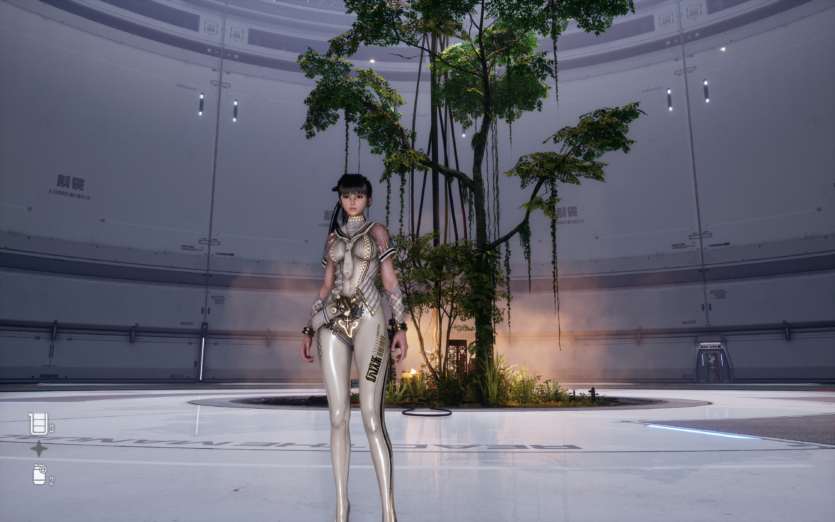
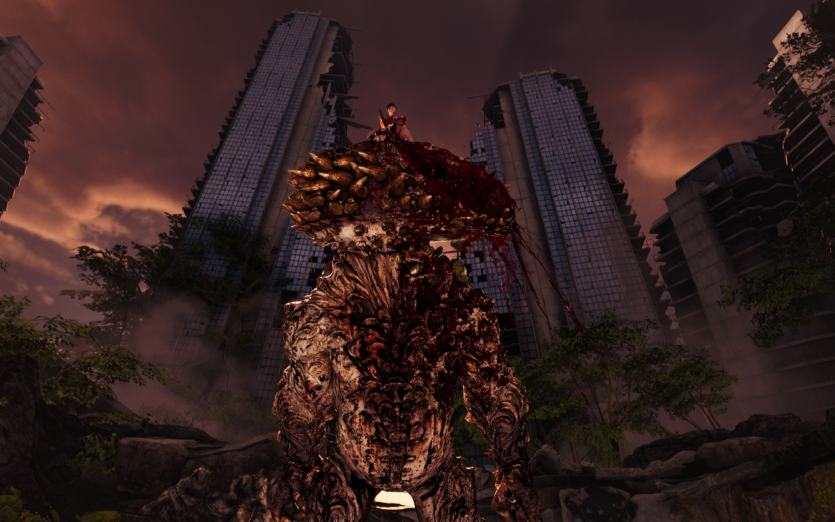
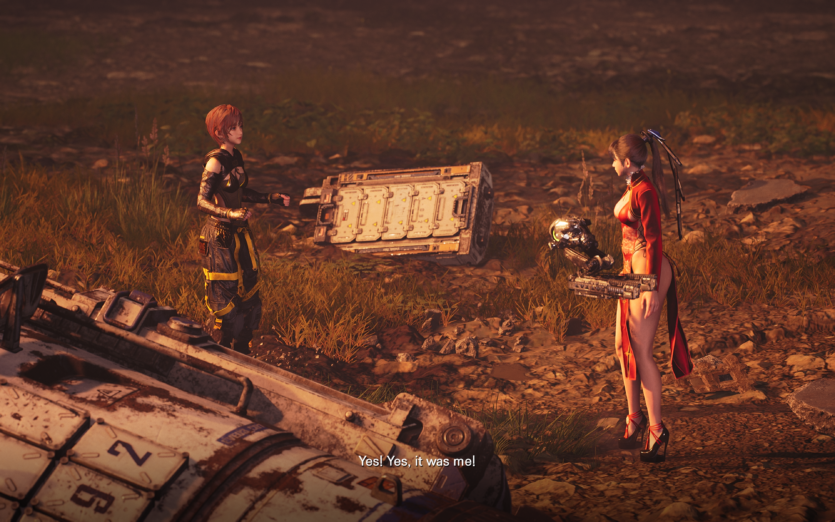




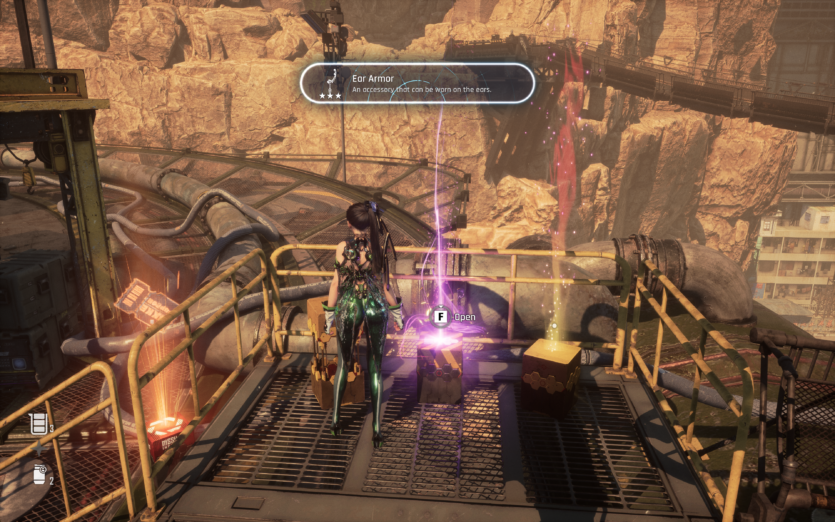
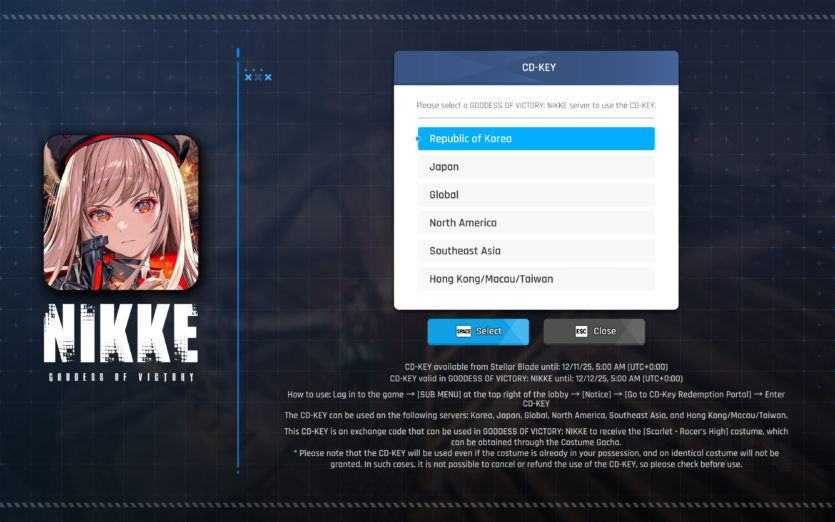

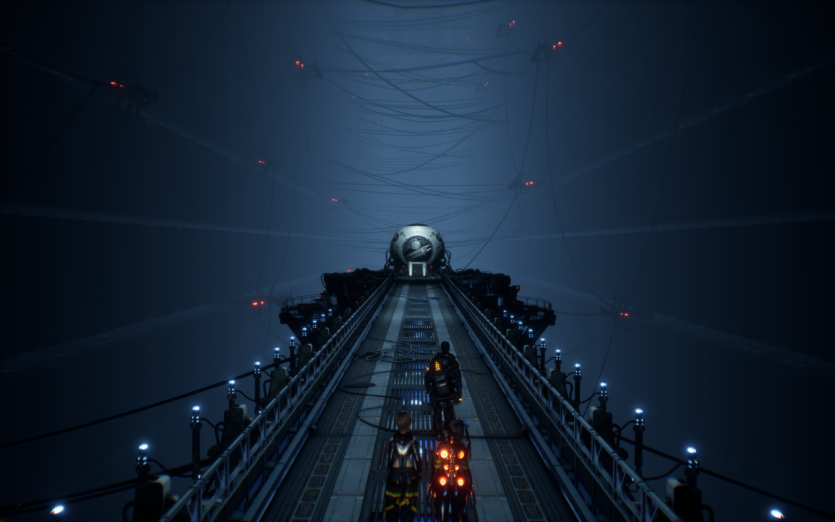
The gameplay here is organized in such a way that without parrying — you are as good as dead. You can dodge, but not always. But catching an enemy attack and responding with a counterattack — that’s when the game turns into a symphony of fighting. In addition, each type of enemy has its own patterns, and if you hit blindly for the first half hour, you start reading them like Bach’s music.
A huge plus is clear animation and feedback. When you parry a giant boss’s blow at the last moment, the screen freezes a little, the camera zooms in slightly, the sound goes deaf, and for a moment you feel like an anime character. It’s not just a visual filter — it’s a thrill.
The game has several types of special attacks: Beta, Burst, and Overdrive activation. Each has its own scale, and each is filled in differently. Beta — for parries and punches, Burst — for finishers, and Overdrive is activated when Eve is on the verge. This is — conditional «rage mode».
In addition to the main weapon, the player eventually unlocks several new fighting styles that add variety. For example, you can focus on chain combos, or on point attacks with a high chance of crit.
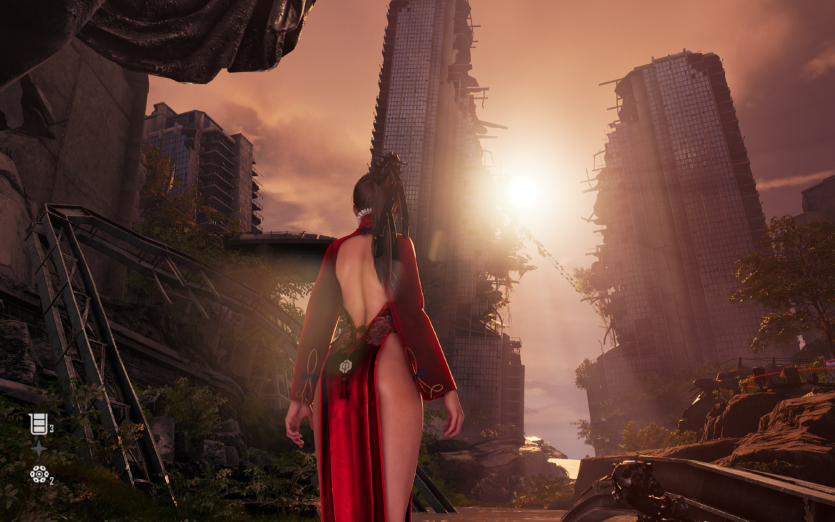
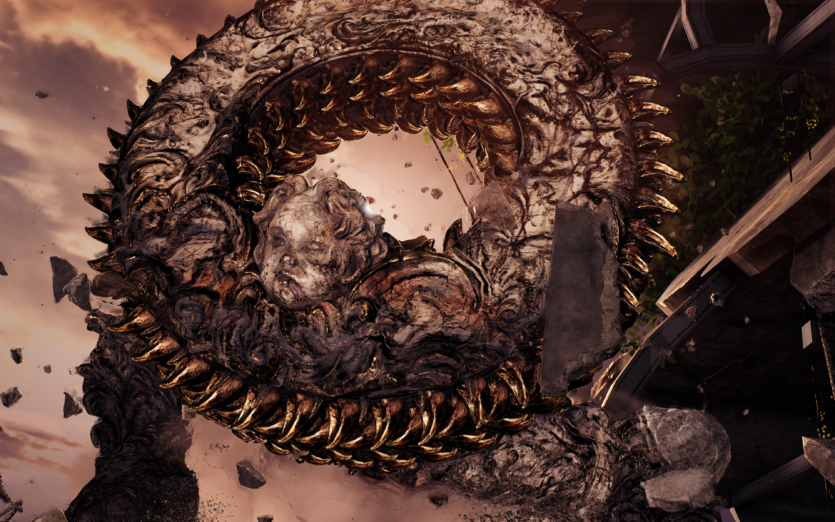
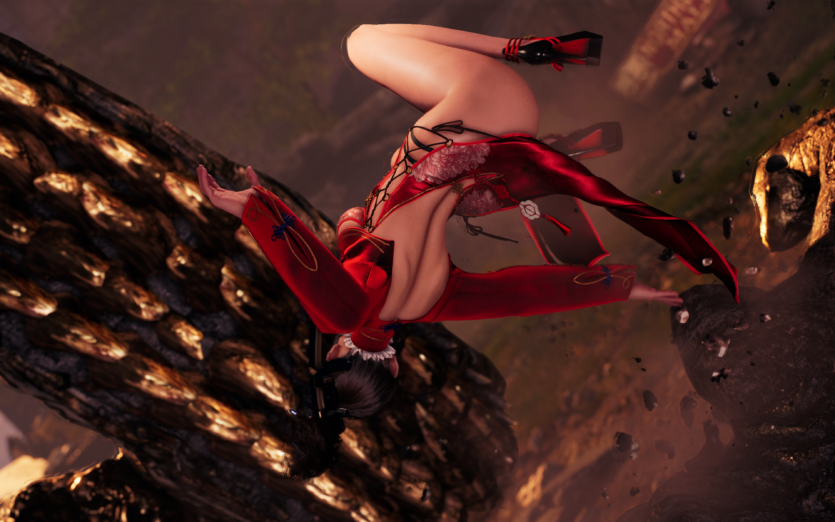
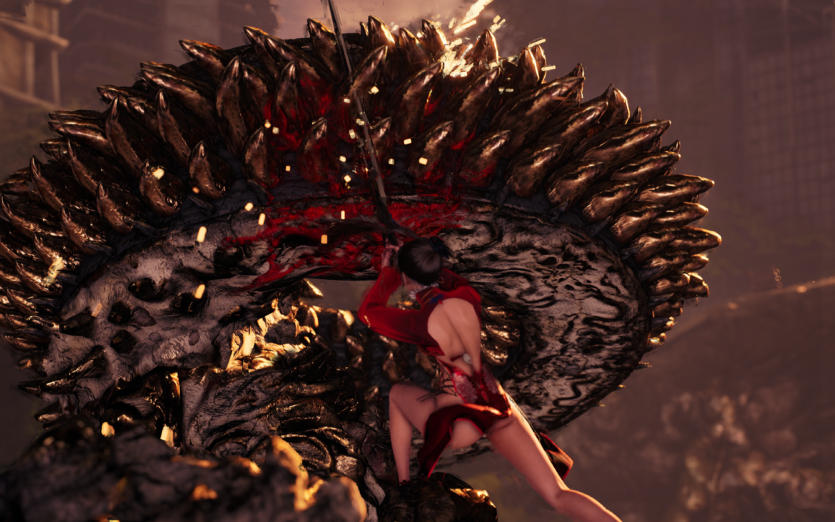

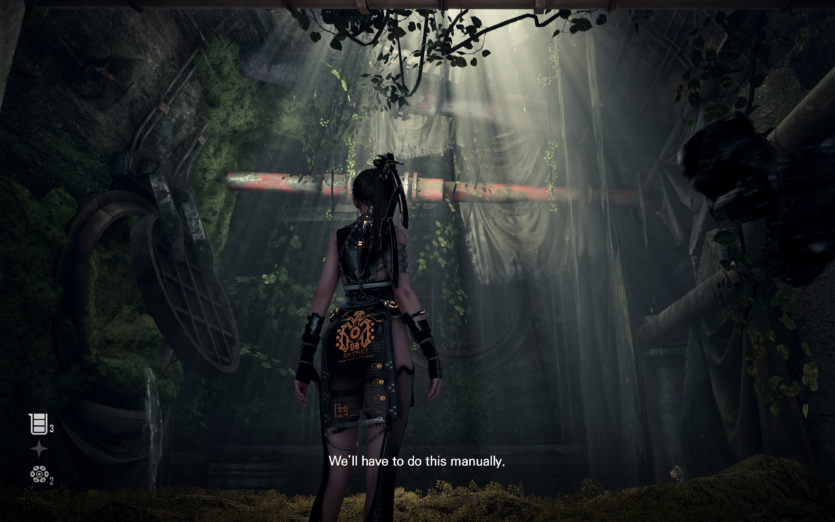
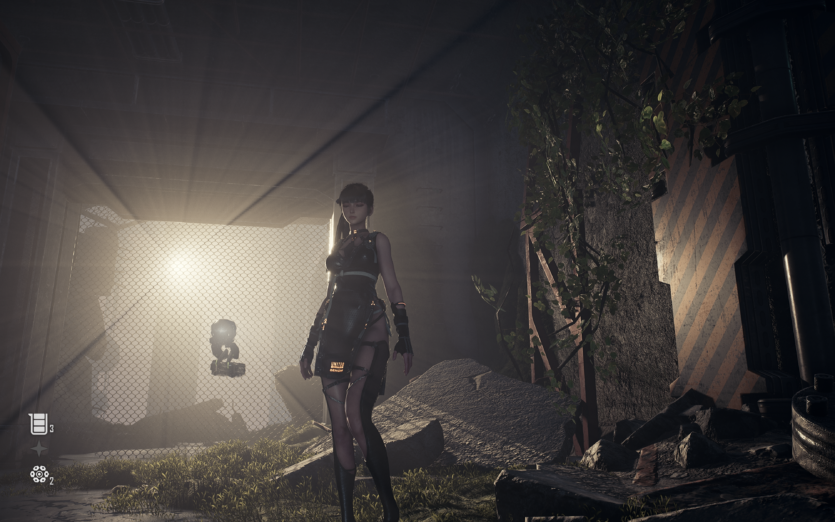

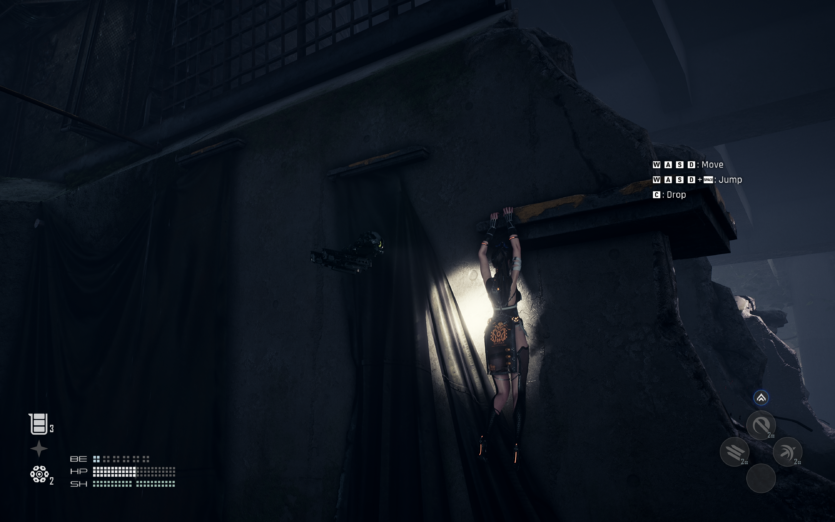
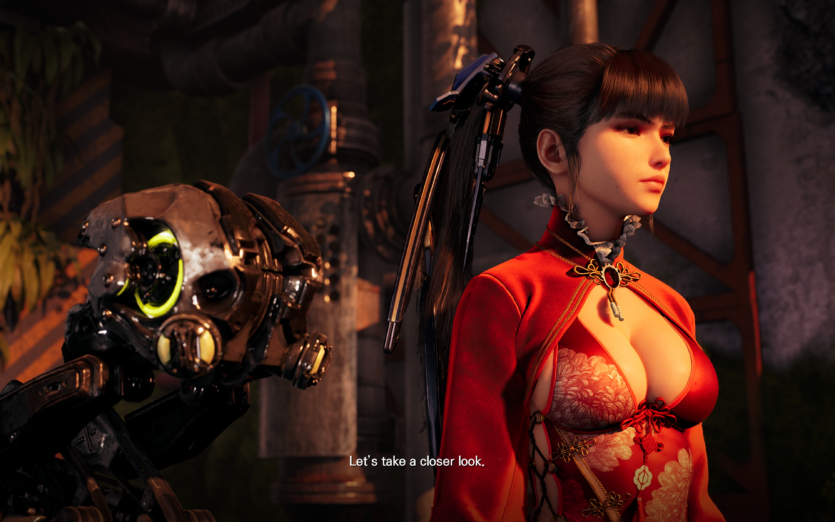

Bosses are another big plus. They feel really threatening. Each one has several phases, its own music, and clear staging. They are not just punching bags. These are well-thought-out enemies with whom you need to dance a little «». Sometimes defeat is not a mistake, but a lesson. And there will be many such lessons here, so prepare your nerves and stroke the Shift and E buttons.
What is important — the game does not punish too harshly. Yes, there are no checkpoints every 3 meters, but the auto-save system is quite adequate. If you lose — back to the fight. And, what’s nice, it’s a little better every time. This is not a Souls game where defeat is a slap in the face. Here — is part of the process of becoming.
Special thanks to the developers for the fact that the combat system is not tiring. It is complex, but not exhausting. If you just want to flex beautiful combos, you can. If you want depth — it’s there. And even at the end of the game, it will be interesting to test new techniques on familiar enemies, because the mechanics can withstand a long distance.
Stellar Blade sound and music
From the very first moments, the player is greeted by the hum of the future: gloomy echoes of the destroyed world, barely audible voices of the past, roars of mechanisms that no longer know why they work. Everything here sounds as if even the surrounding air is tired, but it holds on.
The voice acting is normal, lively. Eva has an ordinary human voice, without artificial intonation or cringe. She sounds appropriate: a little naive at the beginning, then more serious and restrained. It’s not Oscar-worthy, but it’s not wooden either. It’s just okay. And that’s enough.


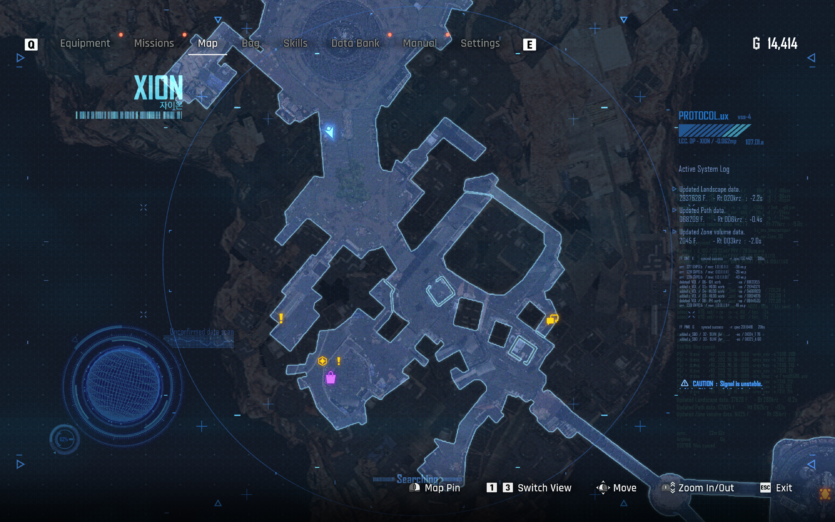
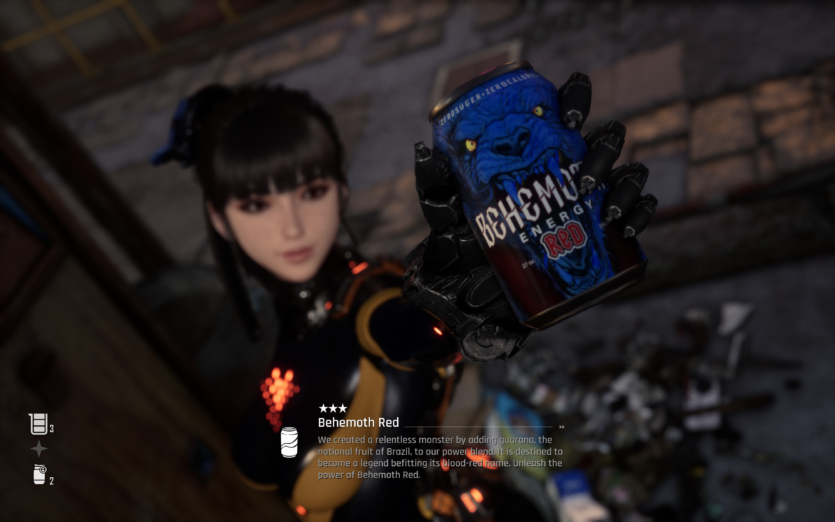
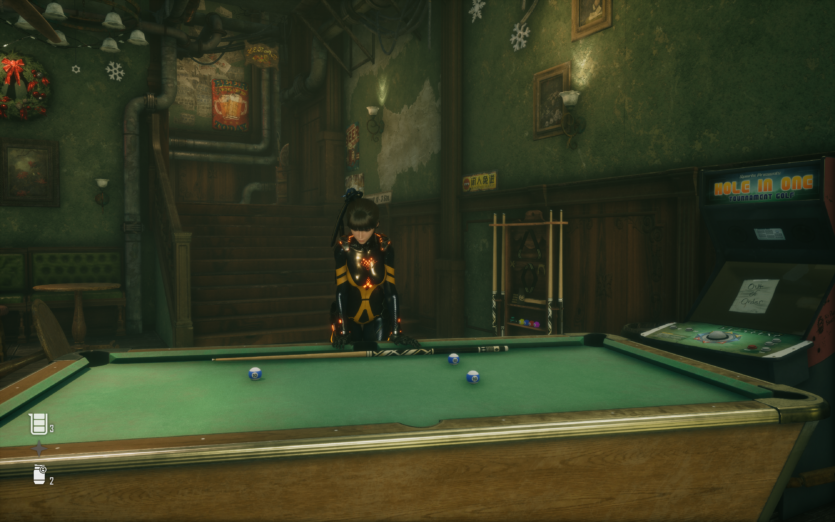
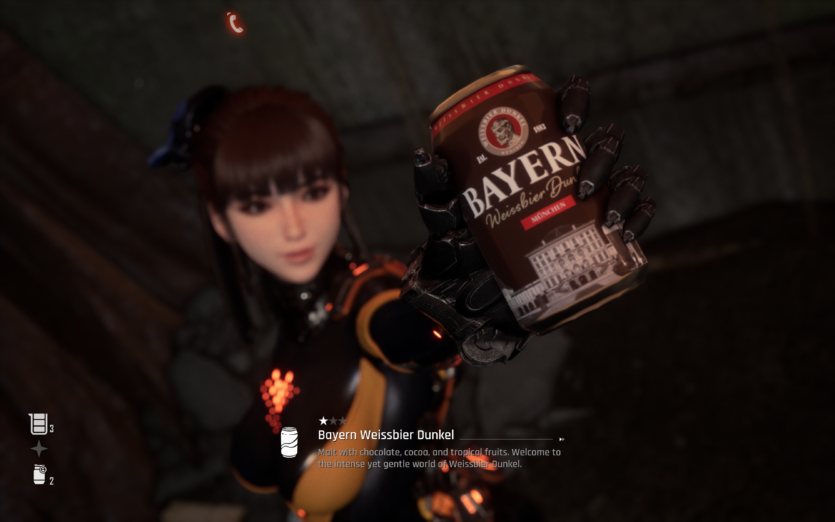
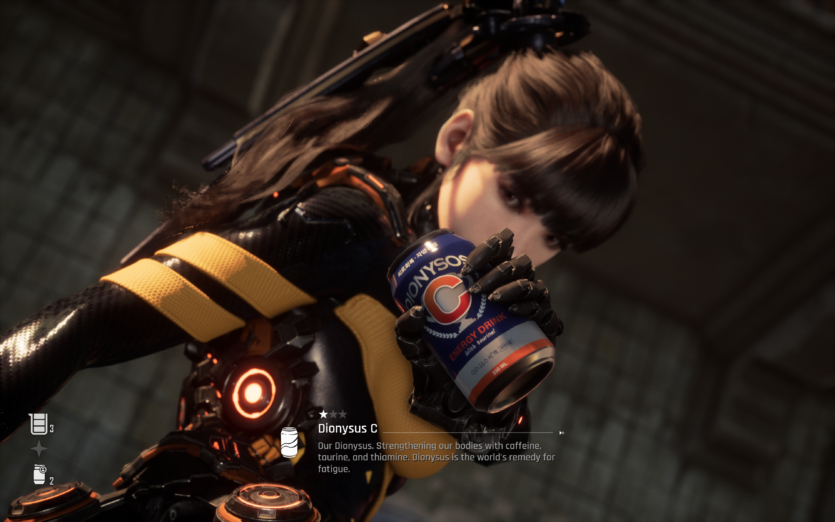
Music — a mix between NieR: Automata, Mass Effect, and Devil May Cry: when the orchestra seems to be playing at full volume, but there is still room for silence between explosions. The soundtrack here is not just a background, but enhances emotional peaks, gameplay rhythms, and even plot twists.
There is a genre called ambient post-epic. If it doesn’t exist yet, Stellar Blade has just invented it. The soundtrack skillfully balances between a lyrical background and explosive orchestral walls of sound. Each battle scene sounds like the culmination of a movie about a world falling apart before our eyes.
The background sounds are also flawlessly executed. The rustling of garbage underfoot, the creaking of concrete slabs, the snarling of rusted antennas — all this creates an atmosphere of post-apocalypse that needs no words. The sound environment doesn’t just accompany you, it tells you. It reminds us that this world lived, fought, and lost.
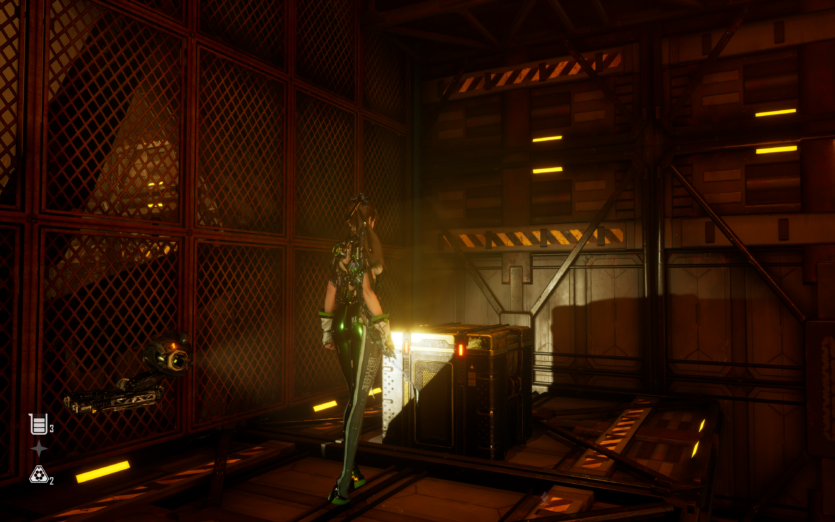

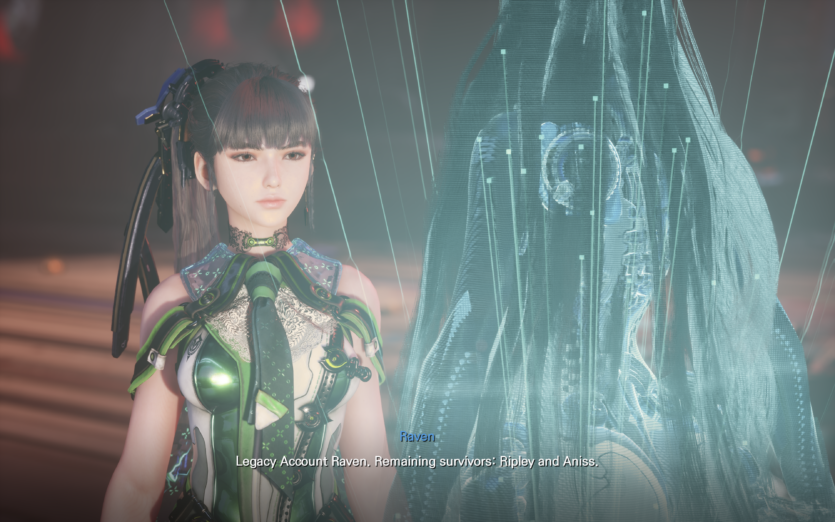
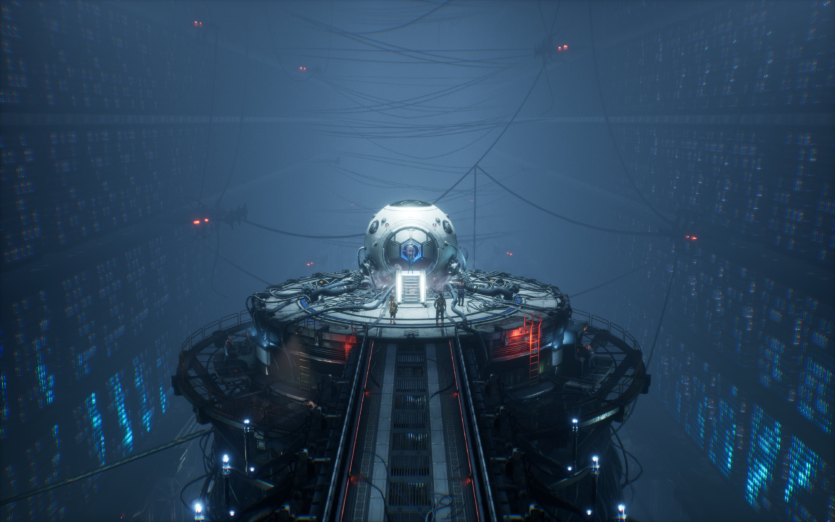

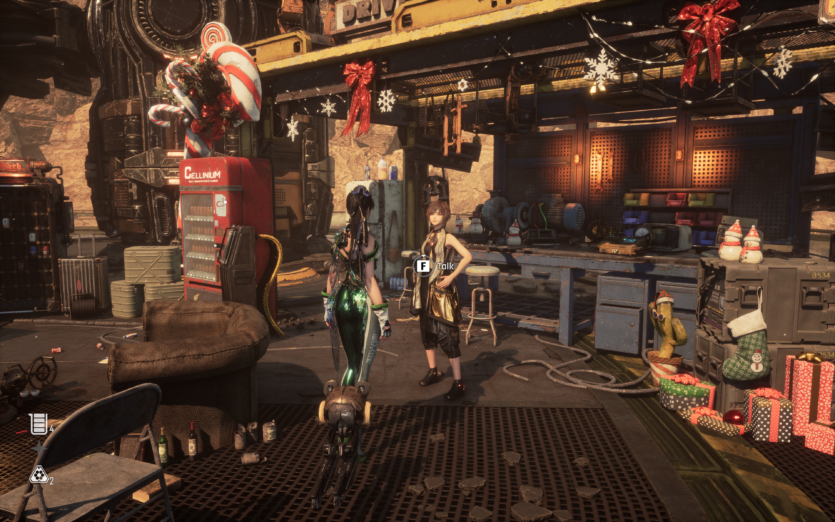

The sound design of the fighting moves is another level of fun. Eva’s punches sound juicy. The moment of parry — crunch, ringing, metallic echo. Finishes are accompanied by a roar that makes you want to stand up and applaud. And special attacks are fireworks for the ears.
Stellar Blade is one of those rare games that you want to listen to the music from while playing, while traveling, and while writing another review at ITC. Stellar Blade’s music is emotionally multilayered. It doesn’t just accompany the game, but comments on it, sometimes even arguing with what you see on the screen.
Stellar Blade graphics
What is visual luxury? It’s when you can put a frame from a game on your wallpaper — and no one will guess that it’s not art, but a regular screenshot Stellar Blade — is just such a game. It looks like artists, 3D designers, and lighting designers have mixed cyberpunk, post-apocalypse, Korean pop art, and biblical fiction.
Collapsed megacities with half-living holograms, deserts with skyscraper rubble, caves with transparent crystals, space bases in Earth’s orbit — everything looks like a world where there is not a single unaesthetic object. Even abandoned garbage cans are beautiful.

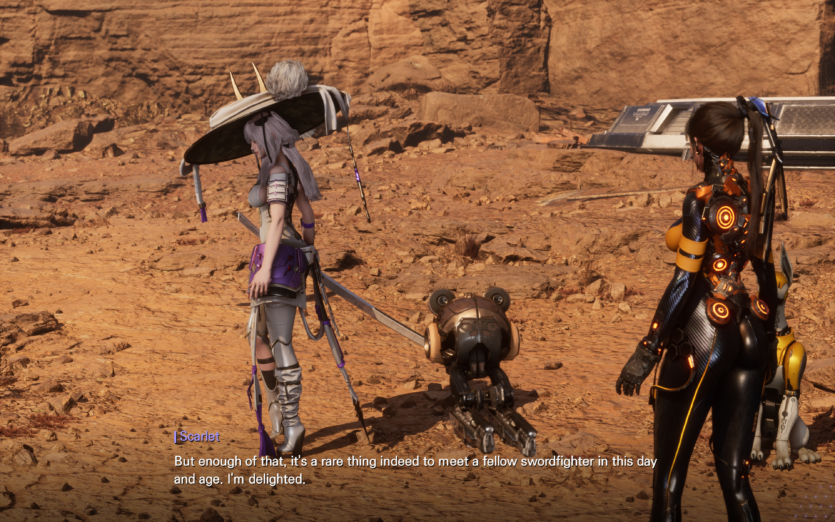

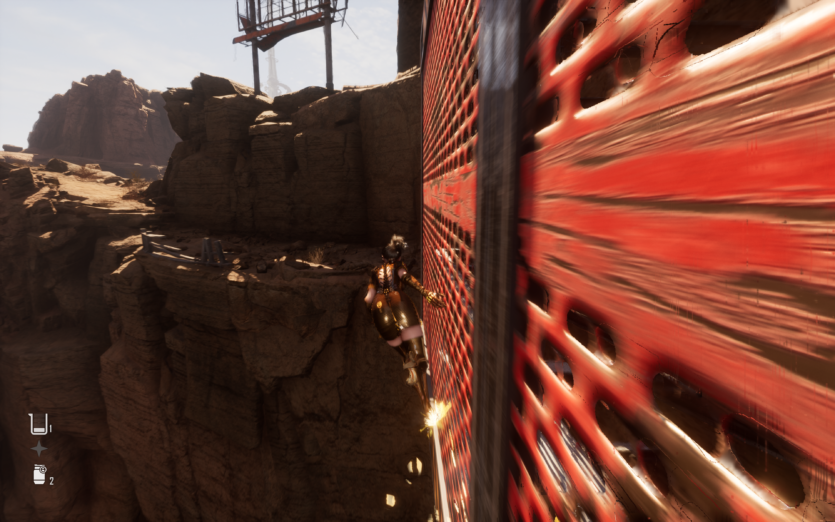
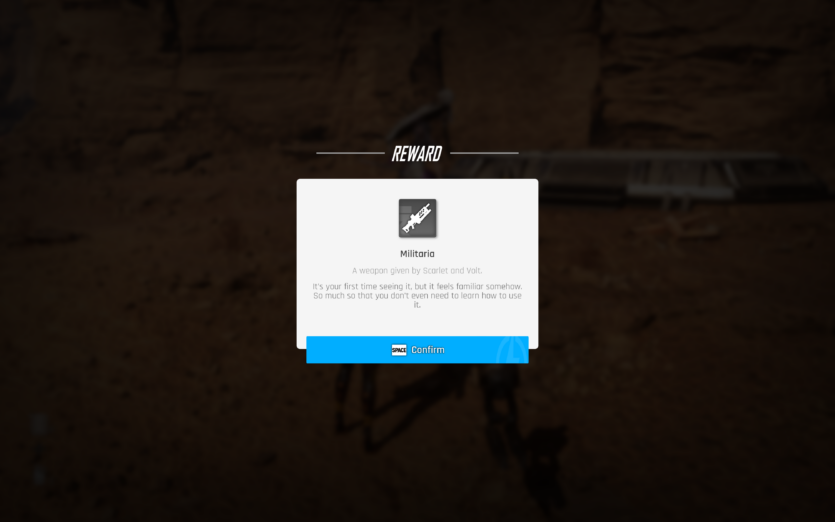
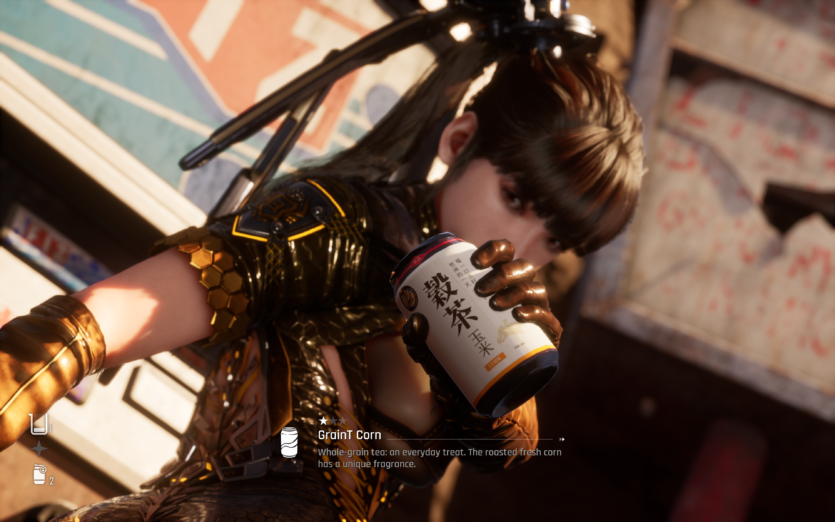

Eva’s model is perfected to the smallest detail: the texture of her skin, the glare on her latex armor, her light hair that reacts to the wind. Her animations are smooth and expressive, from her fighting movements to a small gesture during a dialog. Everything works to create the feeling of a living, not just «drawn» heroine.
In Stellar Blade, light works as a full-fledged narrative tool. The sun through the clouds, neon in dark tunnels, the dim glow of holograms, hot sand glistening under the rays — all this is not only beautiful, but also functional. A shadow can hide an enemy, and a — beam can show you the way.
Control response is another critical aspect that did not disappoint. DualSense support on a PC is definitely a plus. Mouse and keyboard — you can play, but the game feels tailored for a gamepad. It’s harder to get into parrying on the keyboard, so it’s hardcore for enthusiasts.
Finally, the cinematography. All cutscenes look like trailers for expensive HBO Max series, only better. Cinematic angles, depth of focus, slow motion, editing — everything is done manually, with engineering precision.
But there is a fly in the ointment. Stellar Blade for PC, unfortunately, has no Ukrainian localization – neither in the menu, nor in subtitles, nor in the voice acting. It’s a shame, especially considering the fact that the game was actively promoted on the global market, has a considerable amount of dialog and text inserts, and has been translated into many European (and other) languages.
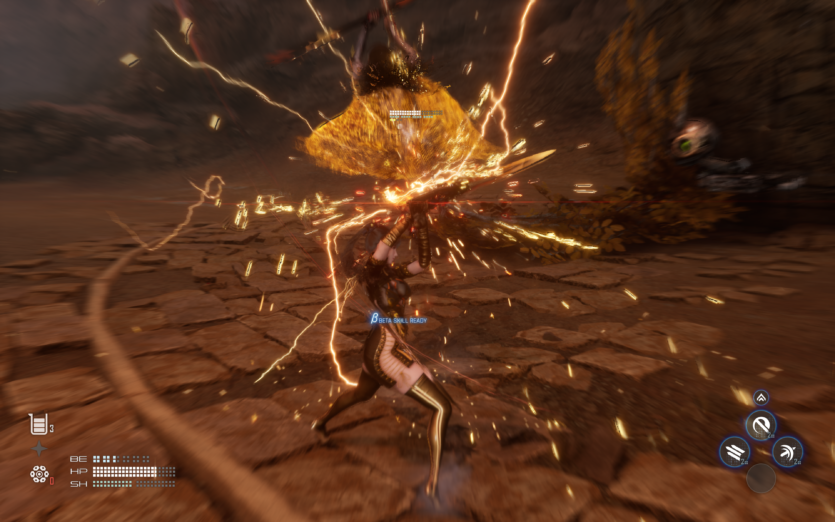

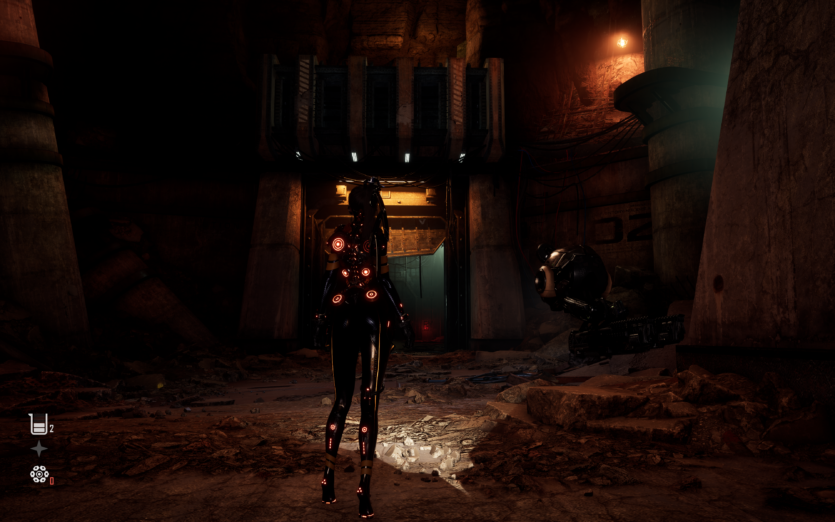
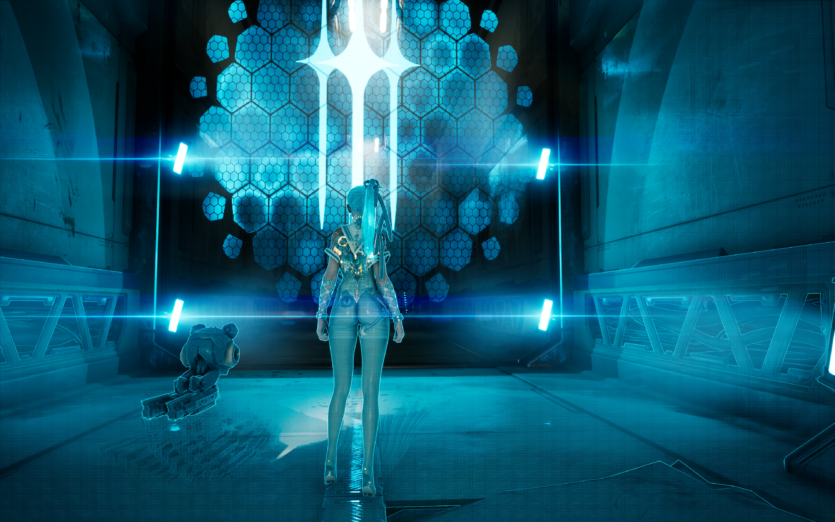

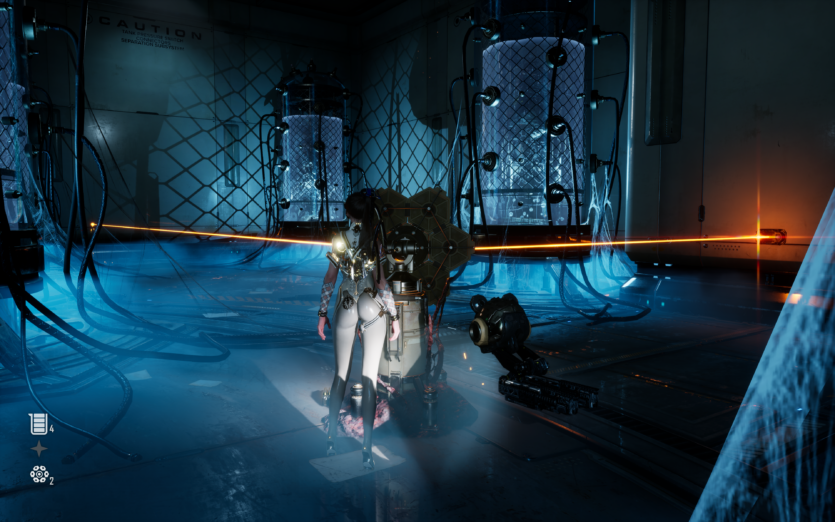
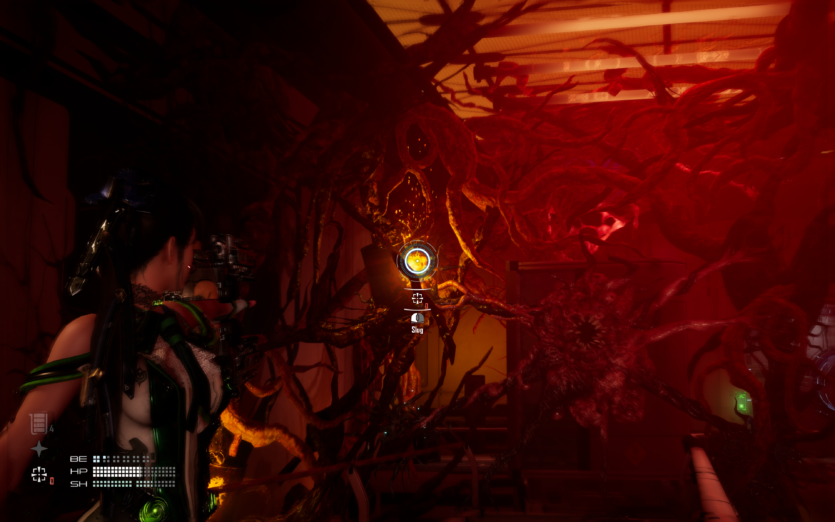
The game feels great on modern hardware and is surprisingly tolerant of veterans of the iron shop. The optimization is at the reference level. And don’t be intimidated by the Unreal Engine 4 engine.
Stellar Blade is almost a benchmark example of a released, proven game: high-quality optimization, high-resolution textures, a clear balance between visuals and FPS, plus support for both DLSS and FSR. And most importantly — without the typical UE4 shader-stutter. No drops, no microfreezes.
I played the first part of the game on the flagship MSI Raider 18 HX AI A2XWIG laptop with RTX 5080, and the second part on an old desktop with GTX 1080 Ti, Ryzen 7 2700, and 16 GB RAM.
On the RTX 5080 with DLAA and frame generation, the game runs at 150+ fps in 3840×2400 resolution at maximum graphics settings. There are no drawdowns or friezes. VRAM is used actively — about 12-14 GB.
On GTX 1080 Ti, the situation is not so rosy, but not catastrophic either. In 1080p on high settings, the game delivers 65-75 fps, sometimes — up to 60. There is no DLSS, of course, but TAA anti-aliasing makes the picture nice. In general, the game is playable. Titan is still in the game!
Optimize Stellar Blade on your PC
For the test, we used the MSI Raider 18 HX AI A2XWIG laptop with mobile RTX 5080, which is as close as possible to the top-end NVIDIA mobile solution. Testing was performed in three resolutions: Full HD (1920×1080), QHD (2560×1440), and non-standard 4K+ (3840×2400).
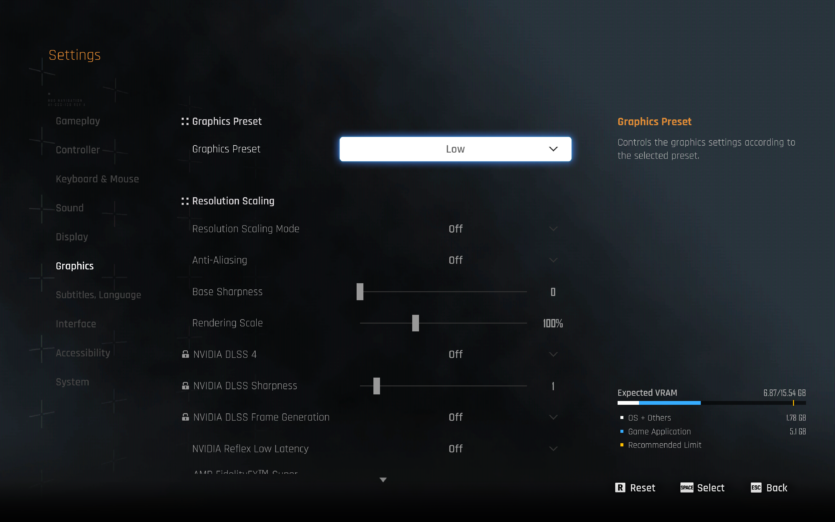
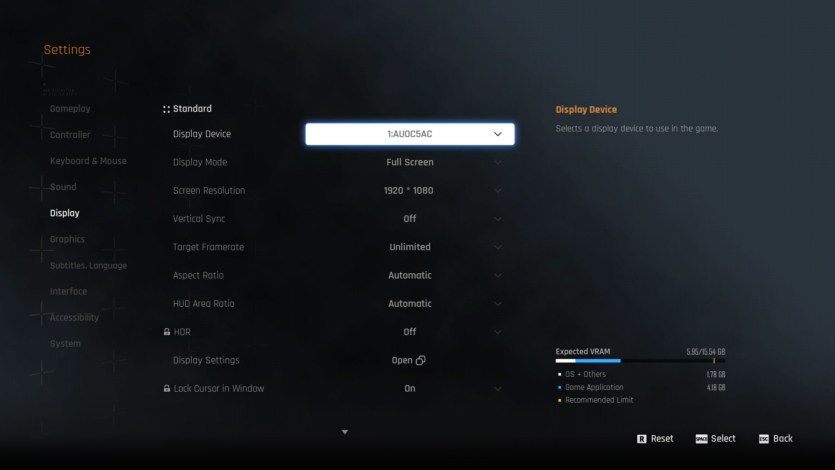
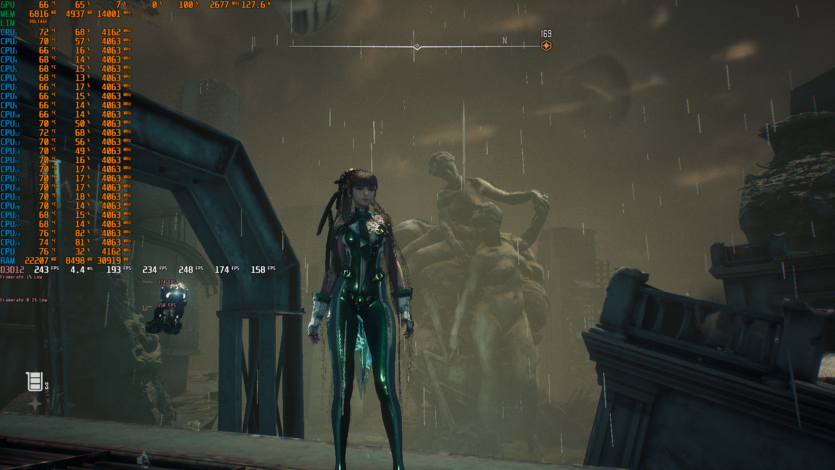
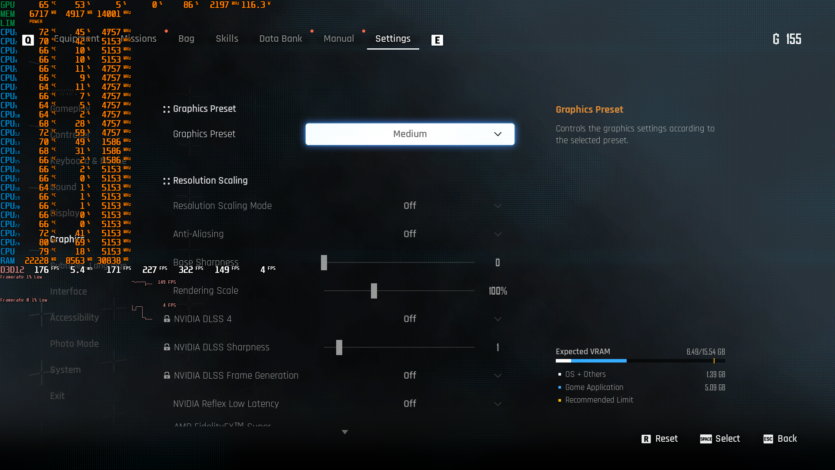


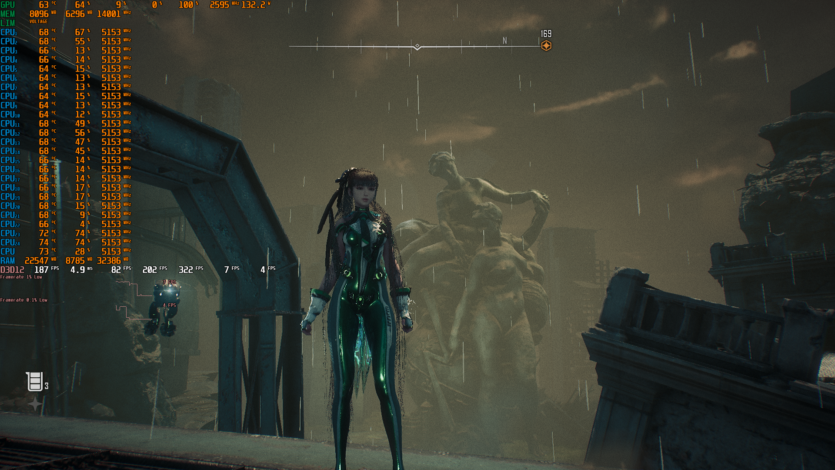
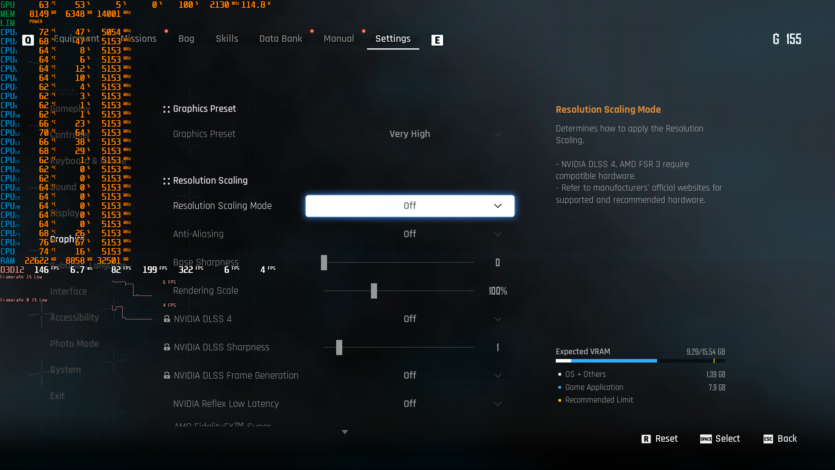
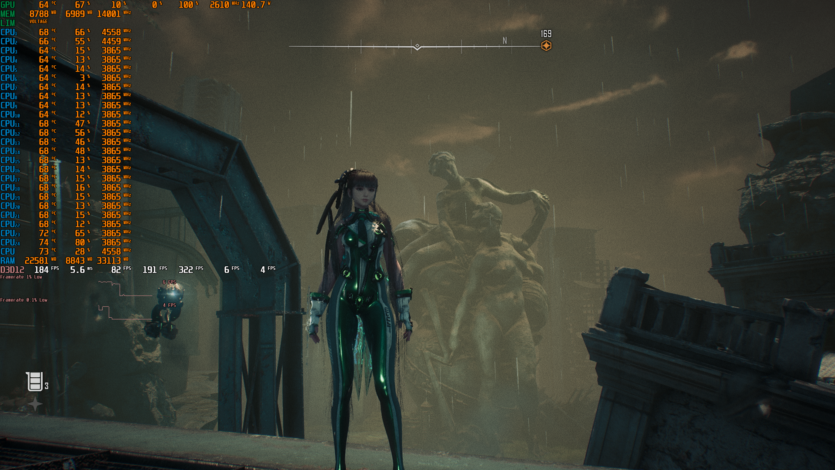
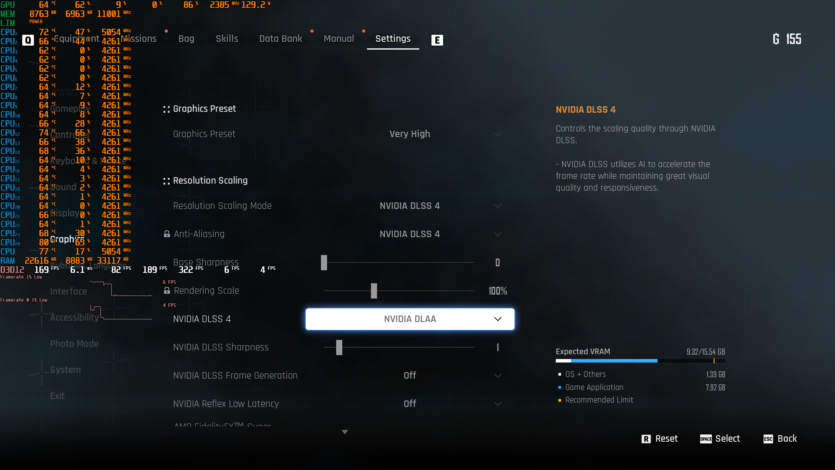
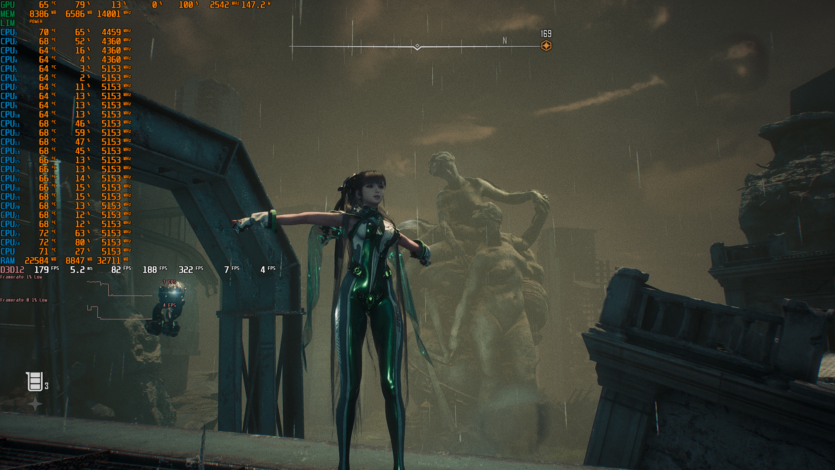
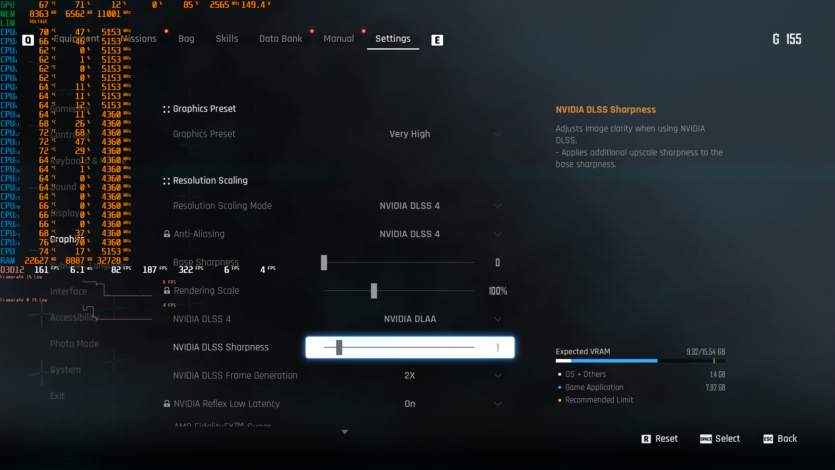
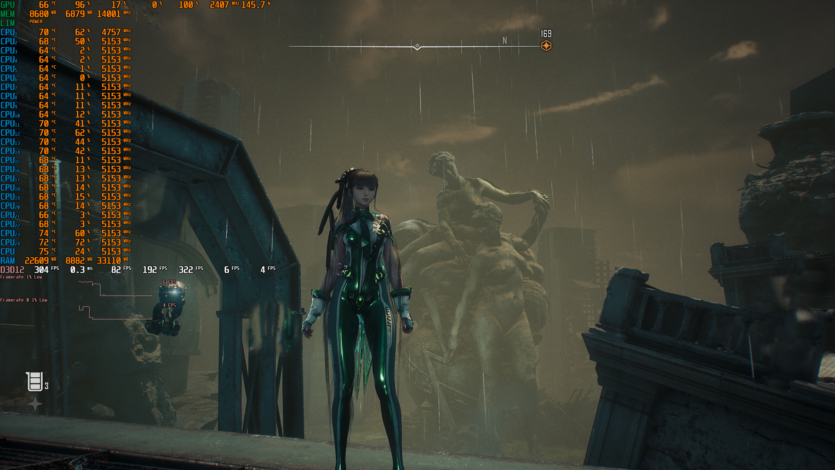




| Graphic preset | FPS |
| Low | 243 |
| Medium | 188 |
| High | 187 |
| Very High | 184 |
Let’s start with popular gaming. The numbers are eloquent, but also a bit paradoxical. On the Low preset, the average frame rate was an impressive 243 FPS — the laptop with RTX 5080 seemed to be bored in this mode, not even having time to warm up well.
Switching to Medium immediately dropped the FPS to 188, which looks like a significant jump — minus over 50 frames at a level that should be only slightly more demanding. However, it’s worth keeping in mind that Medium includes a number of post-processing effects, global lighting, and more detailed shadows that affect the GPU much more than the texture settings of Low.
It gets even more interesting. The High preset produced… 187 FPS. That is, the result is virtually identical to that of Medium, which indicates almost the same load in these two profiles. This is either a sign of successful optimization or an indication that the GPU is already working within the micro-limits of other components, such as the CPU or memory bus.
On Very High, we got 184 frames per second — another minus three FPS, which is only a 3% drop compared to High. Such a minimal gap allows us to recommend the highest settings without any doubts, even on a mobile GPU: the picture quality increases significantly, and the loss in performance — is almost symbolic.
An example of Multi-Frame Generation in 1920×1080 resolution. Maximum graphics settings, DLAA.
| Technologies | FPS |
| No frame generation | 184 |
| DLSS 4 with Multi Frame Generation (x2) | 305 |
| DLSS 4 with Multi Frame Generation (x3) | 407 |
| DLSS 4 with Multi Frame Generation (x4) | 496 |

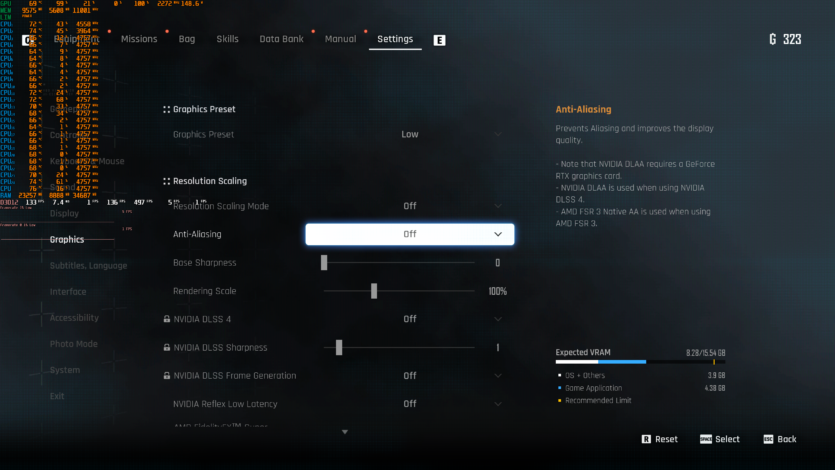



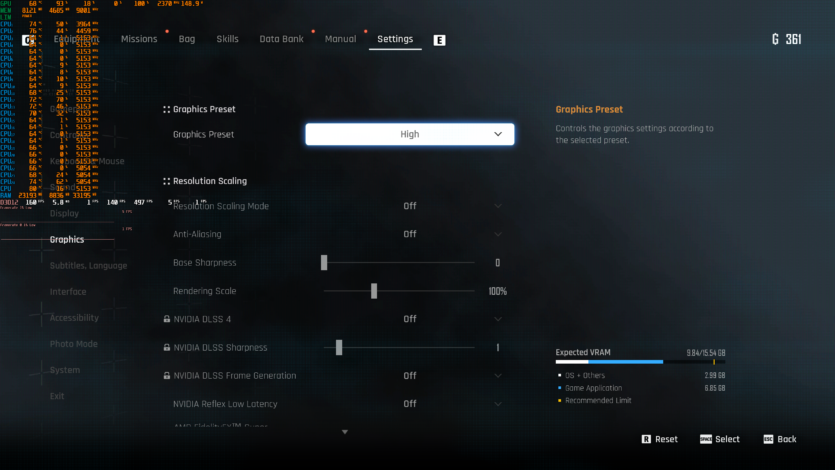
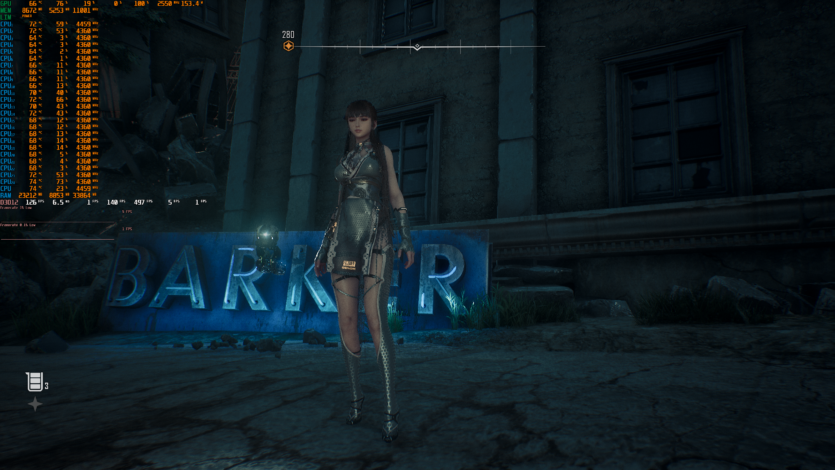




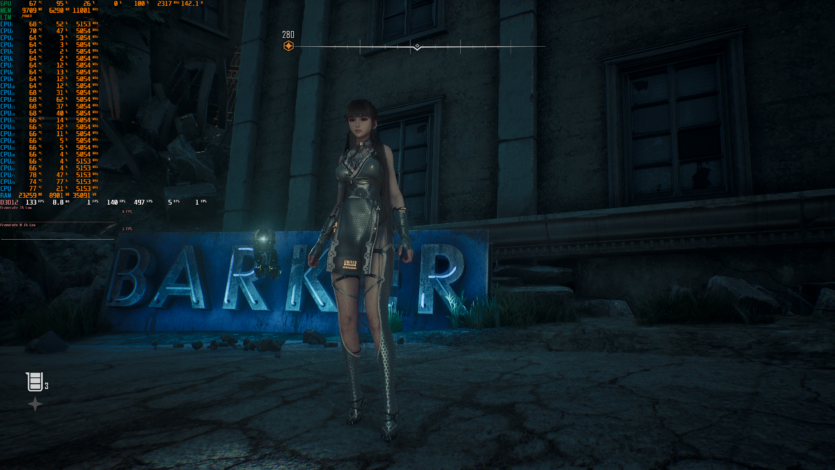
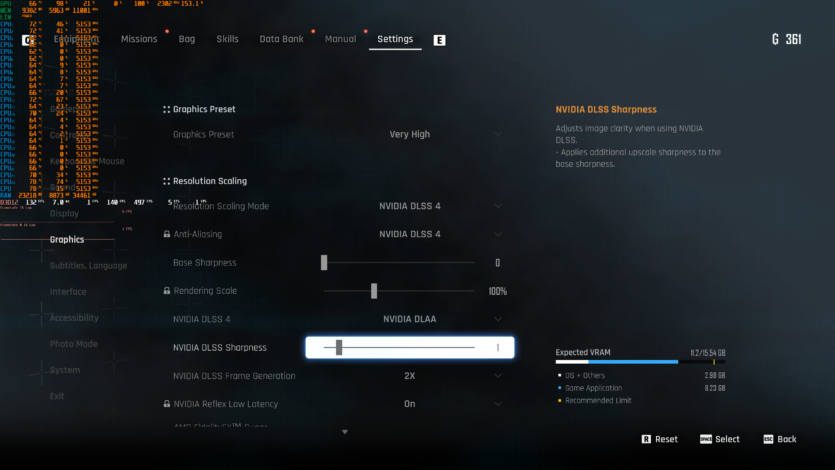
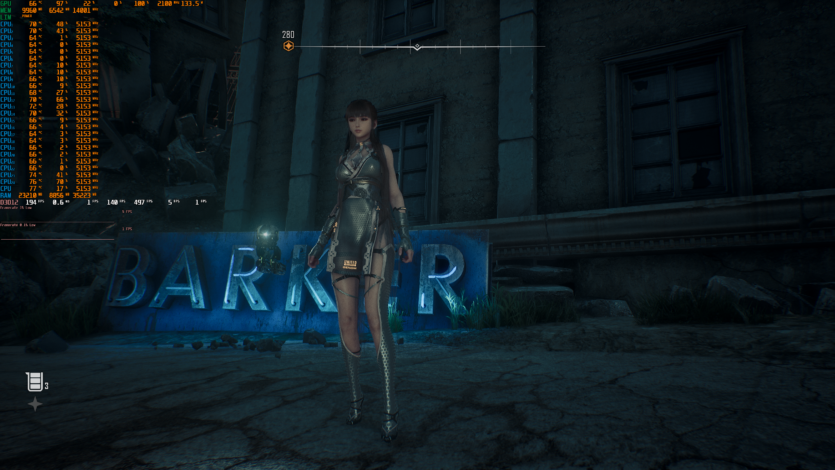


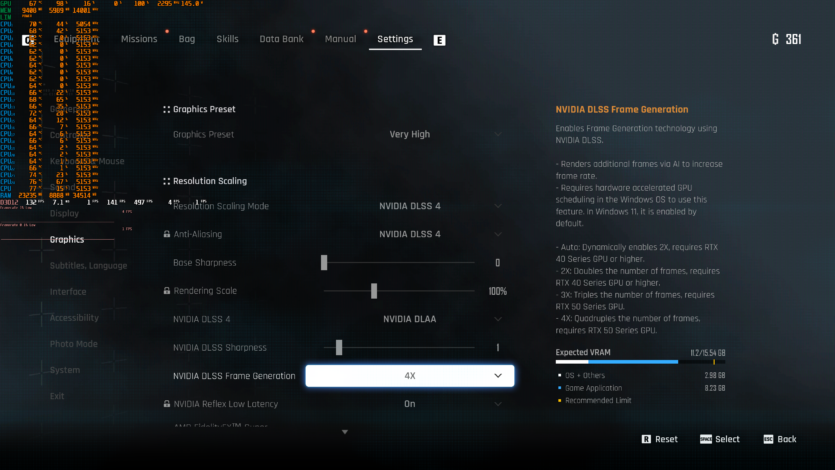
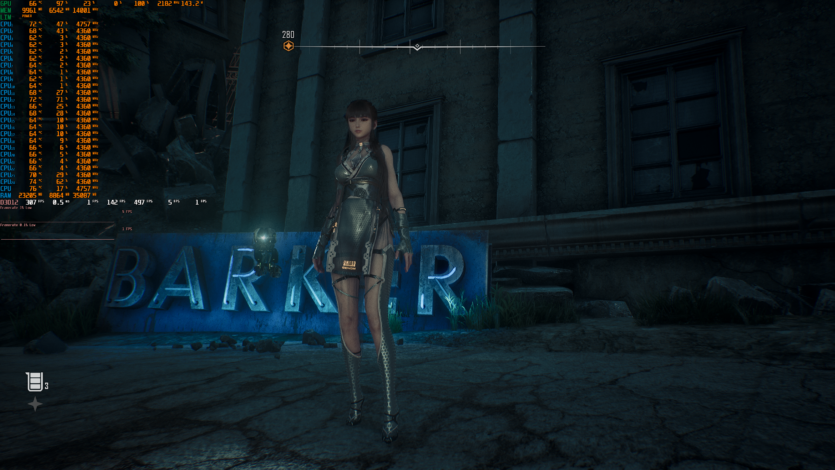
In QHD (2560×1440), the FPS is still confidently within the «ultra-comfort» range. On the Low graphics preset, the average frame rate was 187 FPS — obviously, even at this resolution, the RTX 5080 feels like a fish in water. The GPU is overclocked to its fullest, and the game looks better than on PS5 — while running more than three times faster.
Switching to Medium was quite noticeable — the FPS dropped to 157. This is almost a 30-frame loss, which signals that already at this level the game begins to load the system more actively with more complex shaders, shadows, and volumetric effects. Nevertheless, 157 FPS is still more than you need even for a 144 Hz monitor.
But on High, the performance curve «breaks» — the average FPS drops to 126. This is still far from an alarm zone, but it’s here that you start to feel that QHD — is no longer a joke for a laptop, even such a powerful one. Interestingly, the drop from Medium to High was more than 30 frames, which means that this optimization limit is not the same «floating» as in 1080p.
Very High brought four more FPS losses, dropping the average to 122. And here we see for the first time: despite further quality improvement, the FPS almost does not change — which indicates either smart caching of graphics resources or that the game engine simply reaches the maximum of what it can squeeze out of the GPU at this resolution.
In general, Stellar Blade at 1440p looks perfectly balanced. Even at Very High, there are over 120 FPS without any DLSS tricks.
| Graphic preset | FPS |
| Low | 187 |
| Medium | 157 |
| High | 126 |
| Very High | 122 |
An example of Multi-Frame Generation in 2560×1440 resolution. Maximum graphics settings, DLAA.
| Technologies | FPS |
| No frame generation | 122 |
| DLSS 4 with Multi Frame Generation (x2) | 194 |
| DLSS 4 with Multi Frame Generation (x3) | 257 |
| DLSS 4 with Multi Frame Generation (x4) | 307 |
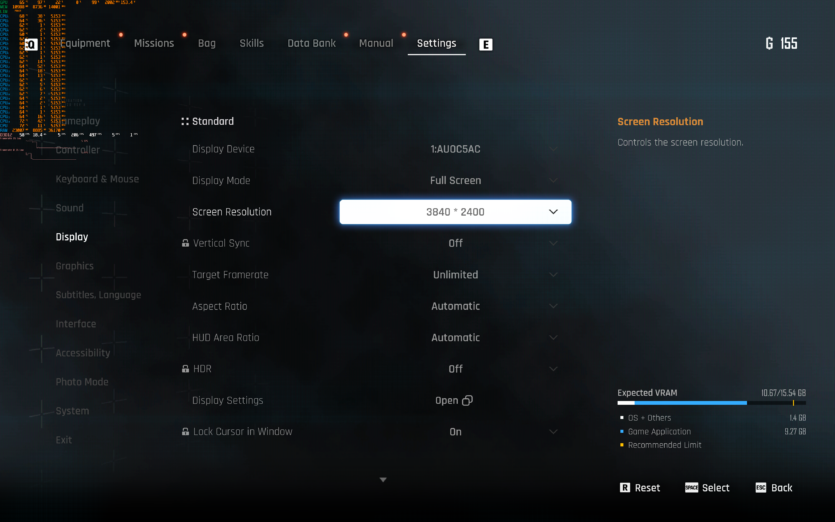

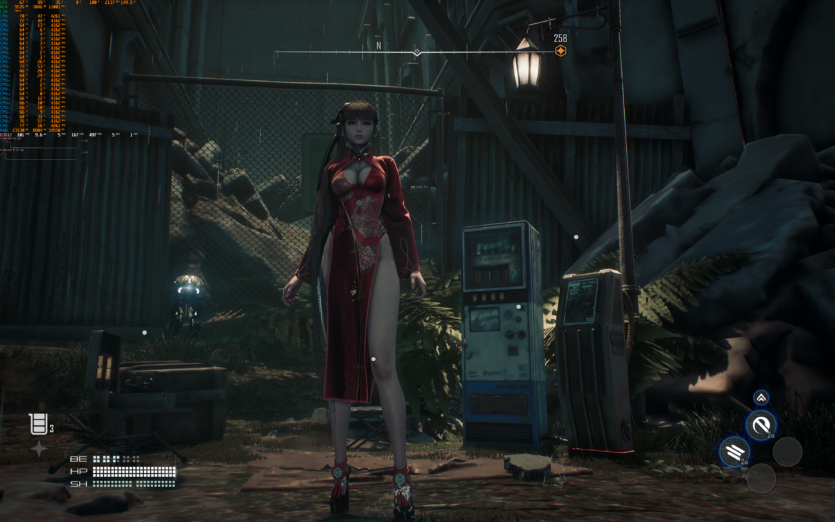
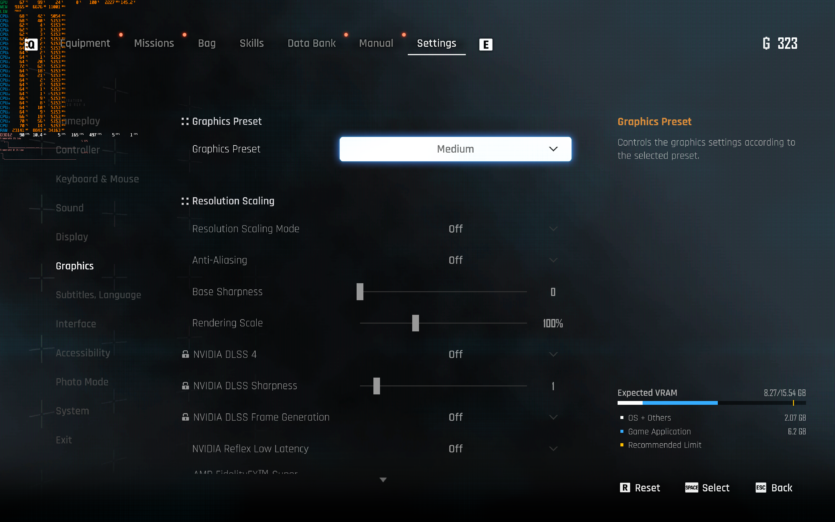
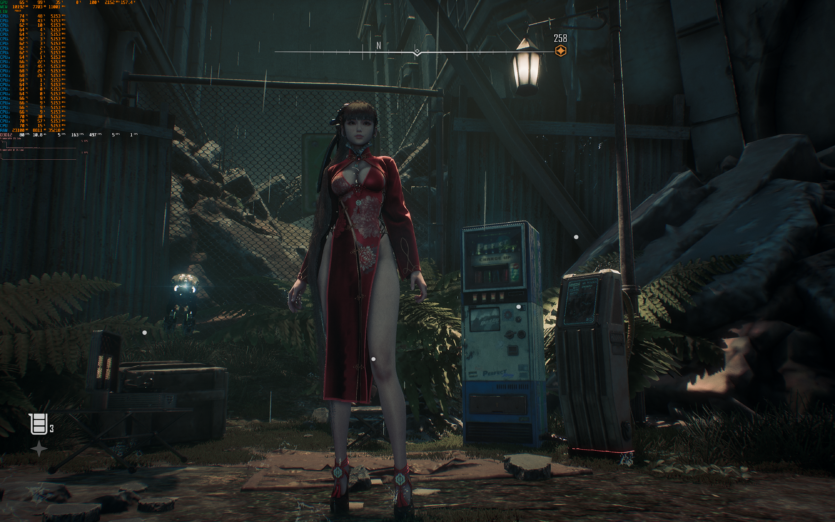
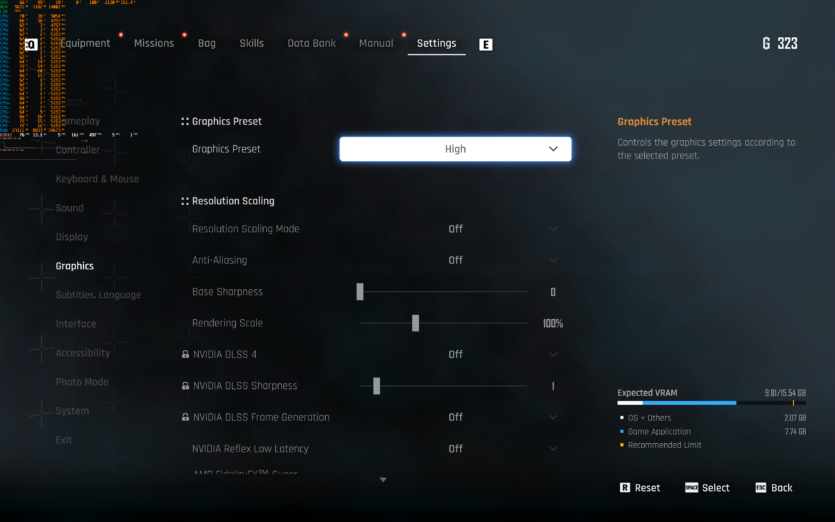

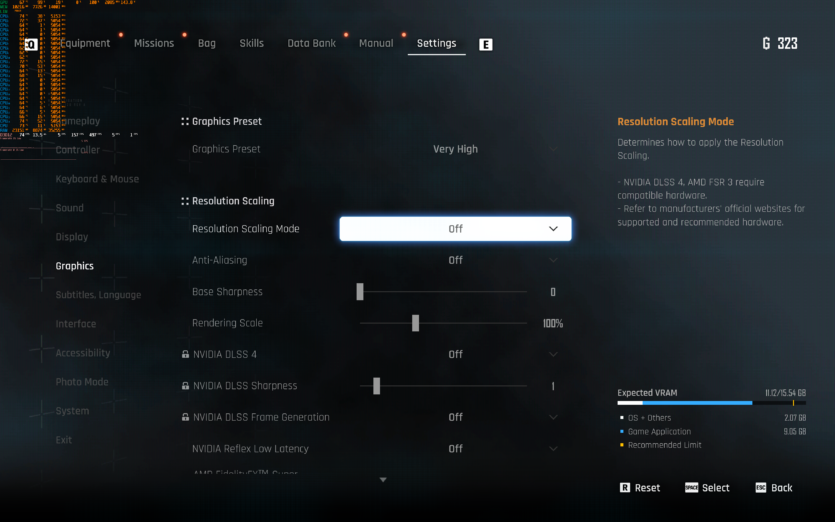

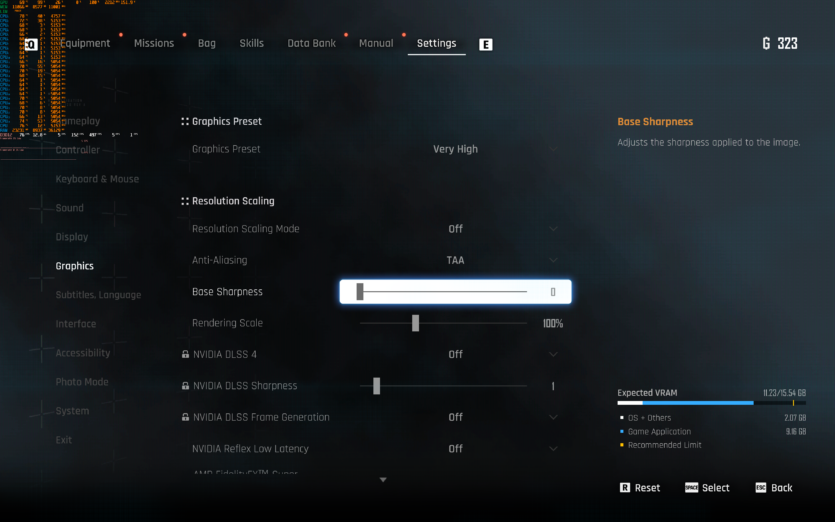
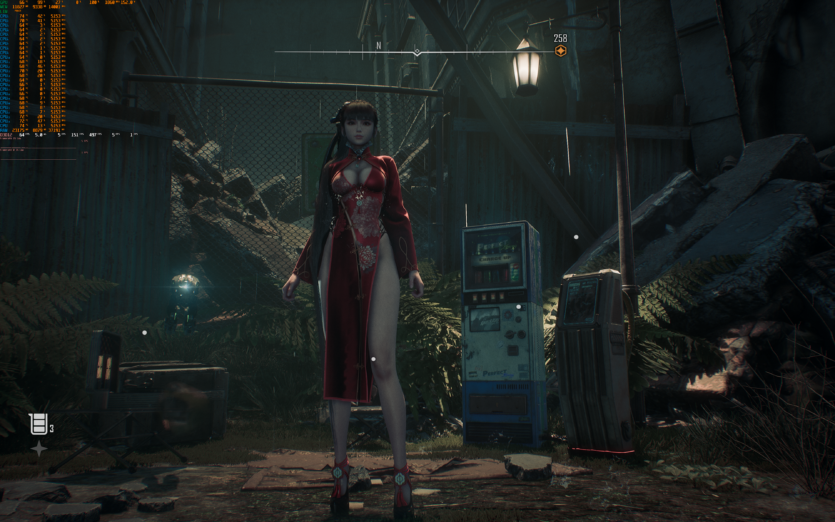

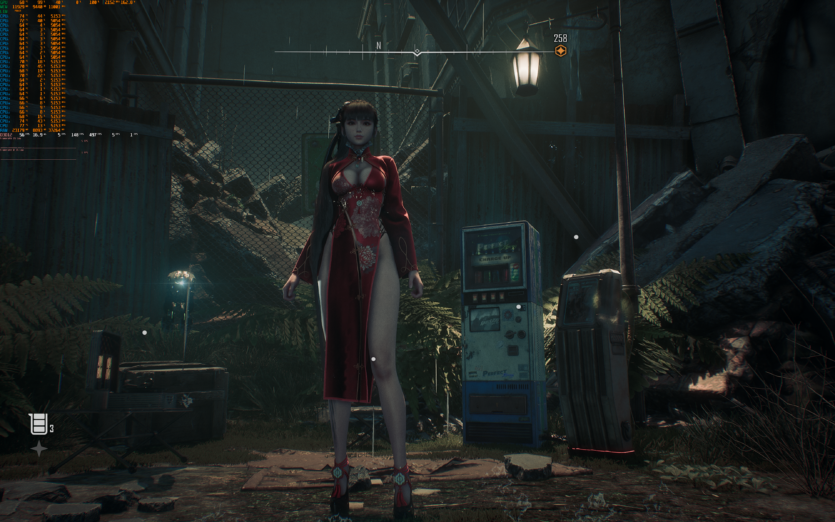
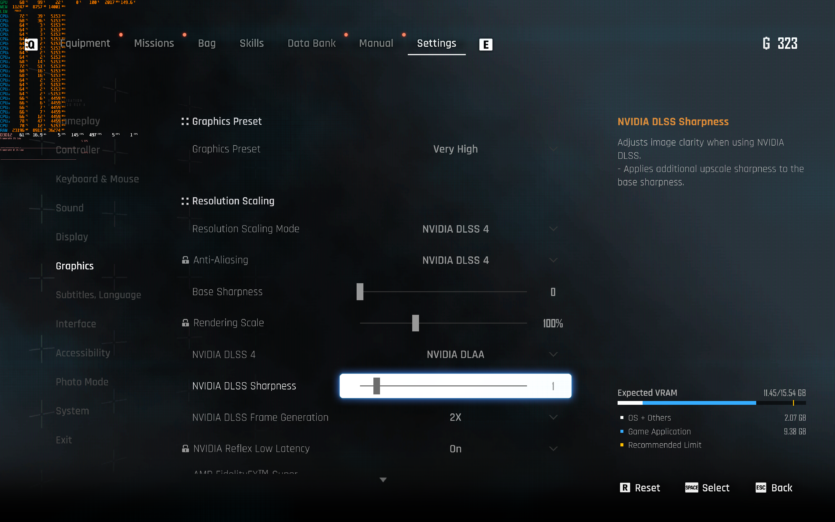
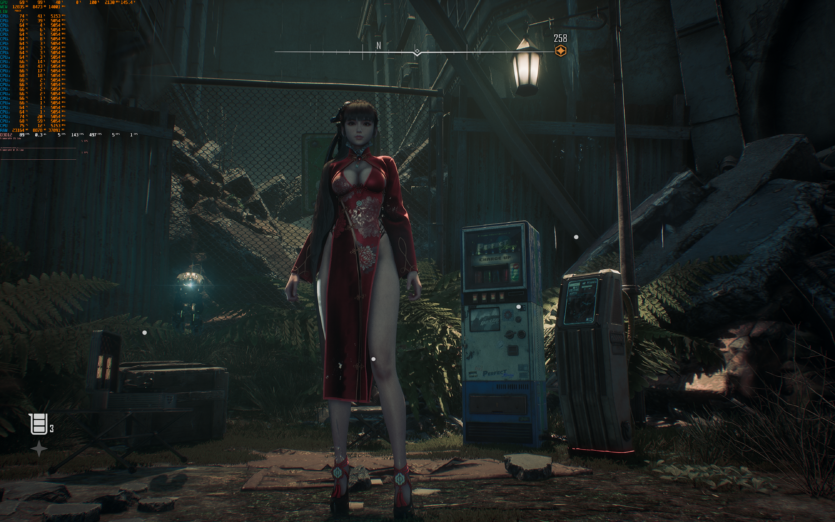
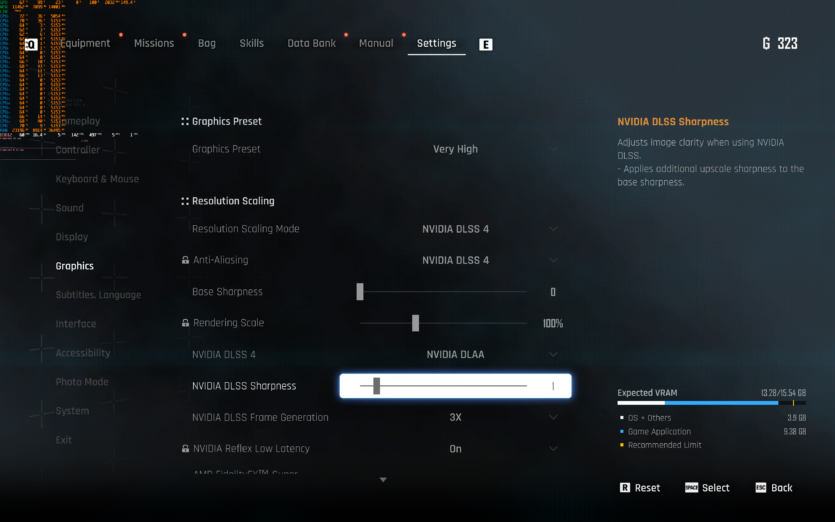
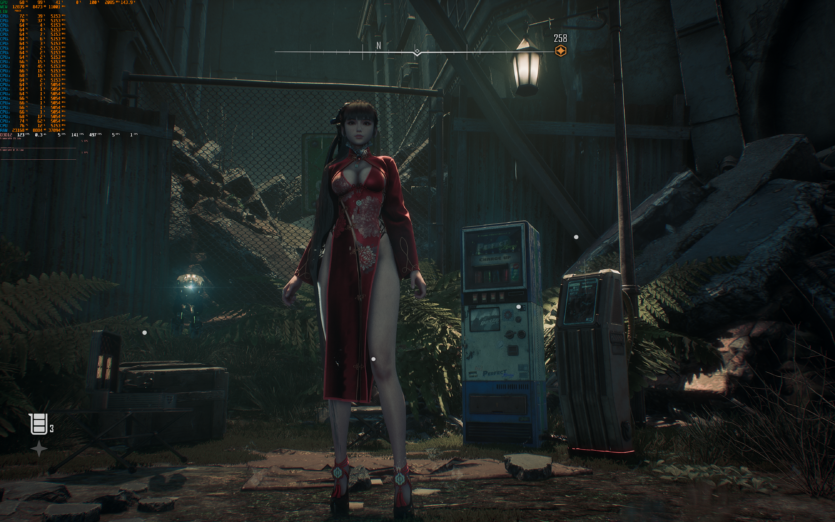
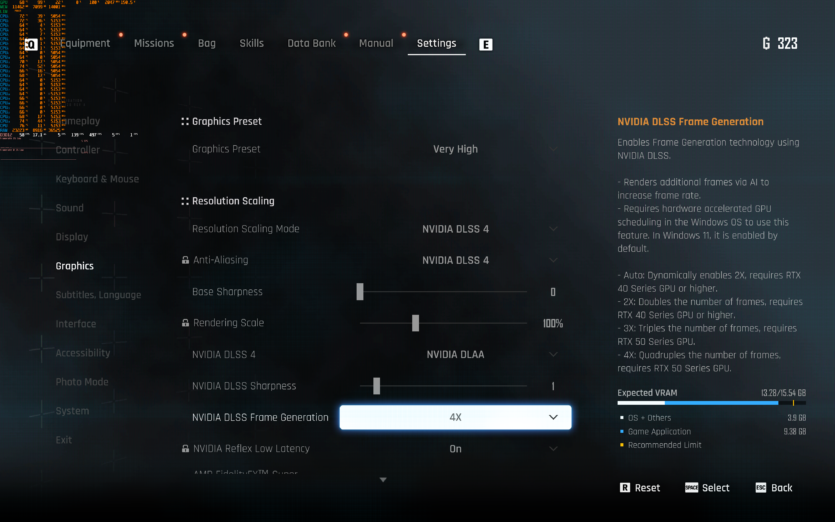
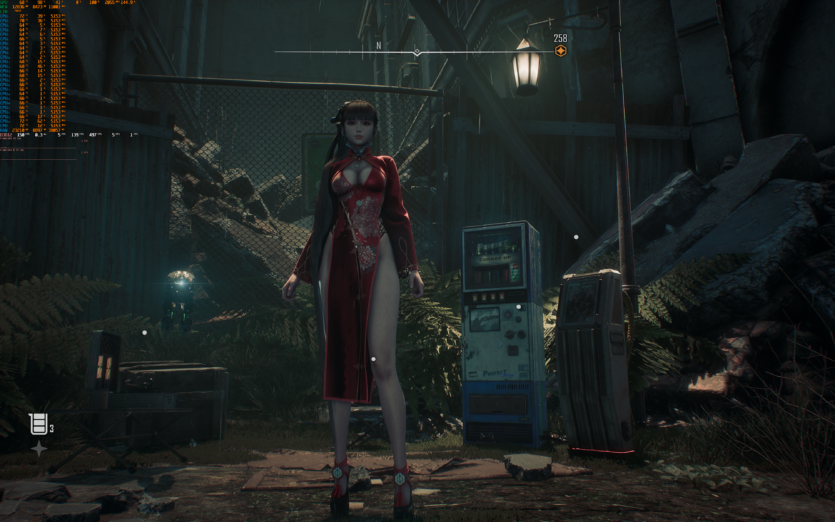
The 4K+ mode (3840×2400) immediately demonstrates that even the RTX 5080 in a laptop — is a monster, but not omnipotent. This resolution is almost 1.3 million pixels heavier than standard 4K, and it’s noticeable from the first minutes of testing. On the Low preset, the average FPS was 101 —, which seems to be good, but the gap from 1440p is noticeable.
On Medium, the frame rate drops to 80 FPS. It’s still playable and smooth, but there is less «air» in the system. Additional shaders, more precise lighting effects, volumetric shadows — are involved, and the video card starts to really breathe heavily. You can hear the fans spinning in the laptop, and the temperature is pleasantly surprising: no more than 74 degrees Celsius for the processor and an icy 69 degrees for the video card.
Switching to High takes another 9 frames, leaving us with 71 FPS. And although technically this is even higher than the magic threshold of 60, here you can already feel the moment when the system is close to its maximum. Frame rate jumps, although not critical, have become more frequent.
At Very High — 68 FPS. And this is the limit. Then either Frame Generation or lowering the settings. Everything still looks cool, it’s a pleasure to play.
On the positive side: no crashes, no friezing, no problems with texture loading — even in 4K+. The game uses system resources stably, there is enough memory to spare, and the GPU holds the load without trotting. This is, without exaggeration, one of the best optimized console games we’ve seen on PC.
However, if you want a truly smooth picture, DLSS is not just an option, but a must-have. Especially in 3840×2400, where Frame Generation allows you to easily go beyond 150 FPS even on Very High.
| Graphic preset | FPS |
| Low | 101 |
| Medium | 80 |
| High | 71 |
| Very High | 68 |
An example of Multi-Frame Generation in 3840×2400 resolution. Maximum graphics settings, DLAA.
| Technologies | FPS |
| No frame generation | 68 |
| DLSS 4 with Multi Frame Generation (x2) | 89 |
| DLSS 4 with Multi Frame Generation (x3) | 123 |
| DLSS 4 with Multi Frame Generation (x4) | 150 |
Prices
Stellar Blade has rapidly burst onto the Steam homepage. The release date is already today — June 12, 2025. Price. For a stylish slasher with photorealistic muscles and equally realistic tissue physics, they are quite predictable.
Standard edition will cost UAH 1,999. For this money, we’ll get a full campaign, bosses of all sizes and shapes, a bunch of cutscenes, and the traditional pre-order bonus: an alternative Eve costume and a drone accessory. No DLC «everything is 8 UAH» for a new hairstyle. For now.
But here’s the deal Complete Edition is already worth UAH 2,599and no, this name is not a joke — it really is «all inclusive». In addition to the basic game, you will receive:
- The publication contains a bunch of cosmetics and nice bonuses for a quick start:
- Captain’s suit «Planetary landing» for Eve — an image that does not shame you to save the world and kill giant Nightsiders.
- A mimic set «Teddy Bear» for a drone — a little warmth in a harsh post-apocalypse.
- Space collection «Astronaut»: a costume for Eva, stylish glasses and earrings, a coat for Lily, a set for Adam, and even the drone was not left without a helmet.
- 2,000 experience + 5,000 gold — an honest boost to get less grind at the beginning and level skills faster.
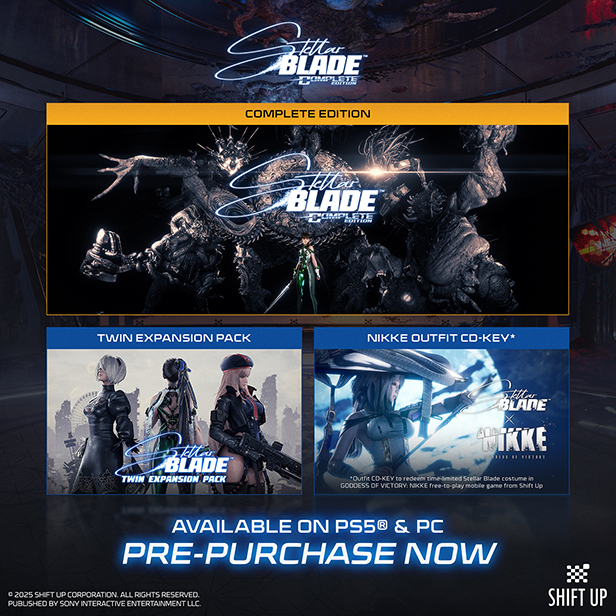
And the most interesting part is in the Twin Expansion Pack: - A crossover with NieR: Automata — a cult costume as an omage for Yoko Taro fans.
- Crossover with Goddess of Victory: NIKKE — a new region, boss, soundtrack, and themed clothing from the mobile hit.
- The bonus code for NIKKE — unlocks an exclusive Stellar Blade costume in the smartphone game.

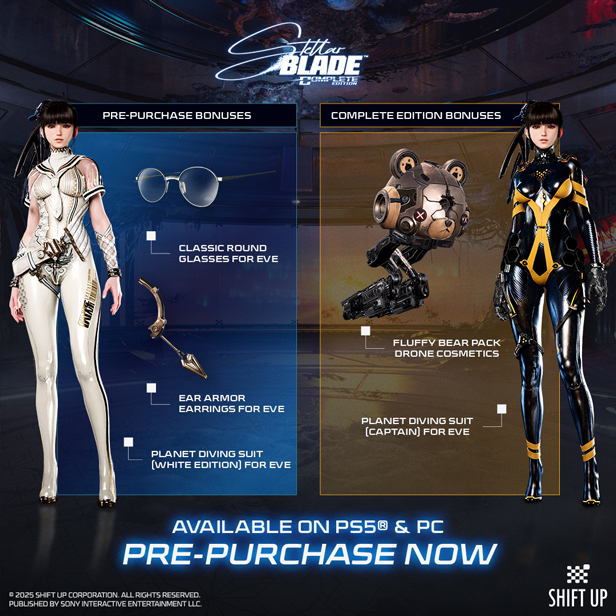
Spelling error report
The following text will be sent to our editors: